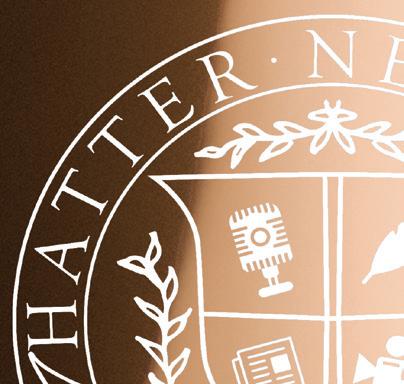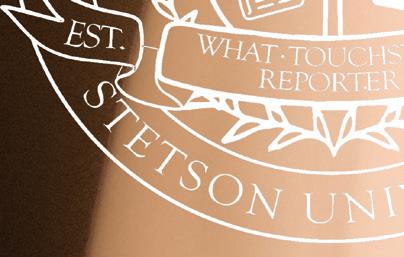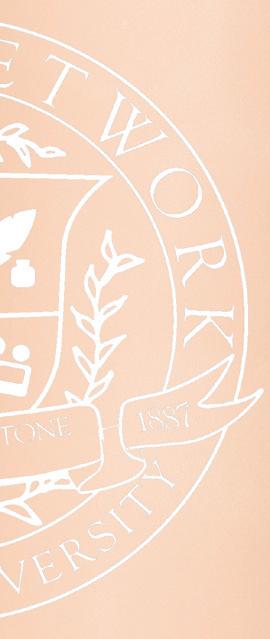



14 Eileithyia’s Children Exploring Reproductive Justice in Hyper-Policed Bodies 22 When the God of Wealth Demands Sacrifice Stetson's Cuts and the Cost of Ego







14 Eileithyia’s Children Exploring Reproductive Justice in Hyper-Policed Bodies 22 When the God of Wealth Demands Sacrifice Stetson's Cuts and the Cost of Ego


Myths are powerful. They shape institutions, movements, and even our own identities. In this issue, we delve into the mythos that surrounds student life, from the narratives we inherit to the ones we invent. Consider this an invitation to question the stories that claim to define you. Which myths are you ready to build up or break down?
Sometimes the most damaging myths are the ones we tell ourselves. The boxes we put ourselves in, the limits we convince ourselves we have. What matters is how we treat ourselves, and in turn, how we extend that care to others. Treat people with kindness; you never know what stories they’re telling themselves.
Editor-in-chiEf, Sara Ward '27
Going through these first steps of my journalistic career, I realize that many myths surround the choices that I make every day. Journalists are often stuffed into boxes and smacked with labels that they did not choose to adopt. Lately, I have been trying to break these myths and molds by diversifying my journalistic approach to the community around me. There are stories everywhere, and I want to make sure they get the platform they deserve.
ExEcutivE Editor nico alonSo '26

The myth of waiting for the right moment. Although I still have four more years of medical school! Knowing that I’ve wanted to be a doctor since I was very young, being an undergraduate has felt like an infinite wait while others chugged forward. However, it truly takes a village to keep the healthcare system running and the coveted M.D. cannot fulfill it all.
Managing Editor dE'vanESE
John-BaptiStE '26

How is a myth born? Through people, of course. Through generations of belief. Through the continuous support of a single, all-encompassing truth, but myths aren’t honest. They can be wrong, and they can be mean, even when you’re telling them to yourself. How can you stand up to a myth? You can start by making your own. Even when just finishing this semester feels like a Sisyphean task, keep moving forward. Keep making your own myths.
crEativE dirEctor Maria latour '26
The development of myths through social interaction and tradition is a powerful thing. With myths come special secrets that are told through the art of storytelling. Whether choosing to share that story visually, by word of mouth or in written form is up to you. What you define as true is up to you. Just be mindful of the risks.
photo Editor indya Mckoy '26

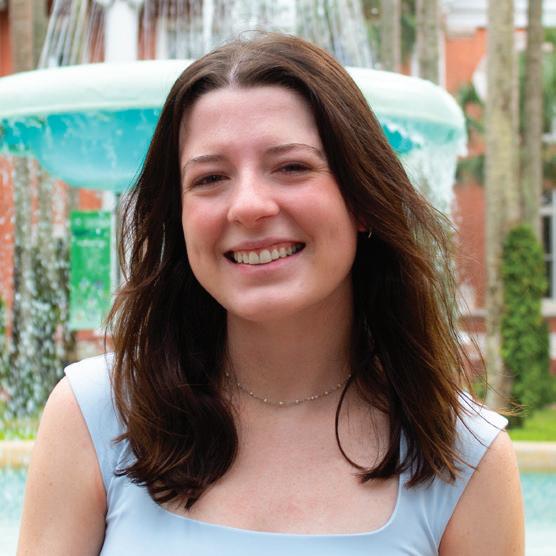
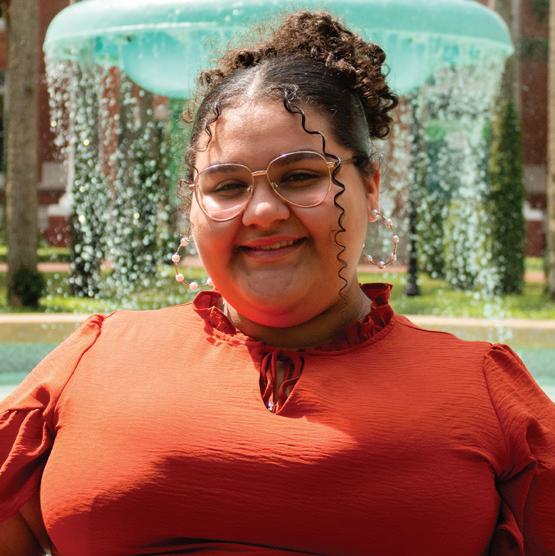
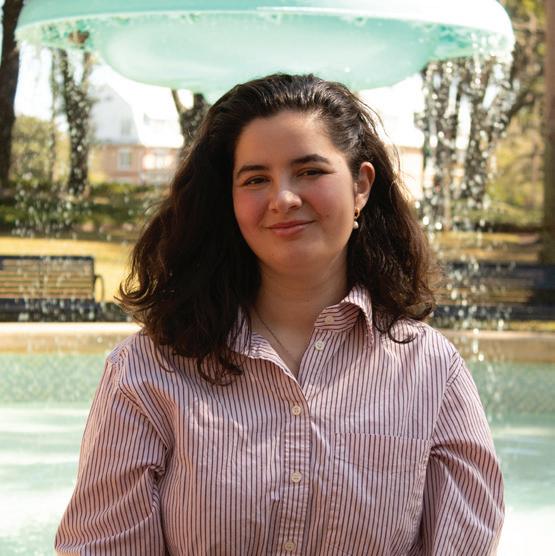


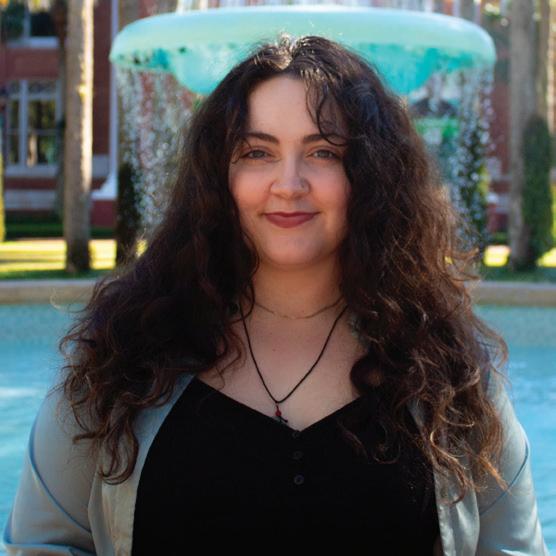

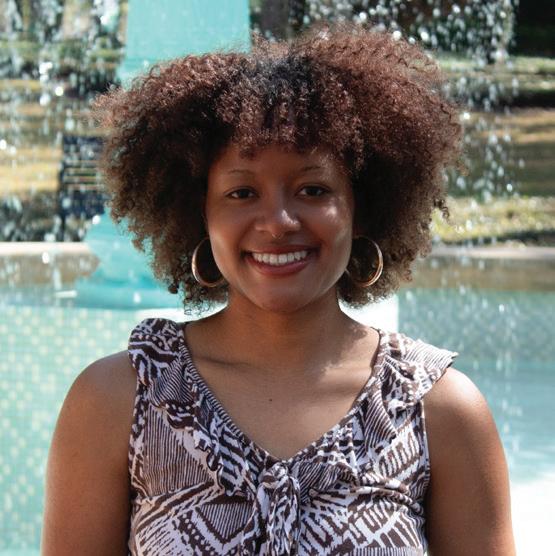
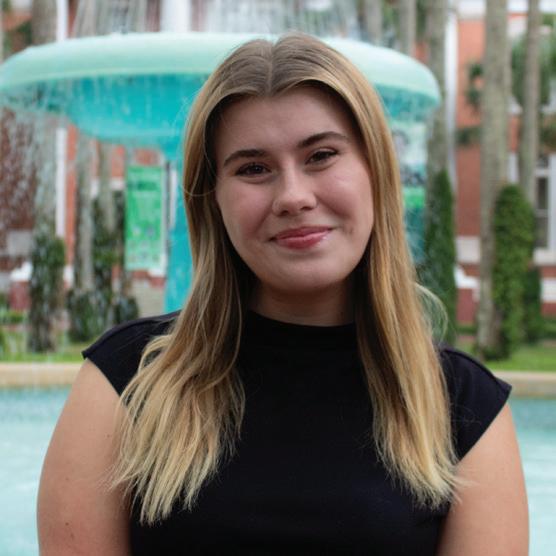

Doodling in class
Sara Ward, Editor-in-Chief
Maria Latour, Creative Director
Indya McKoy, Photo Editor
Neglecting my need for sleep
Dilly-dallying
Sleep
Nico Alonso, Executive Editor
De'Vanese John-Baptise, Managing Editor
Michaela Hawthorne, News Editor
Katie Eudy, Copy Editor & Fact Checker
Tiktok Aimlessly people watching
Breanna Gergen, Arts & Culture Editor
Natalie Reese McCoy, Web Editor
Jomar Rosado, Staff Writer
Getting lost in thought The desire to hang out with friends
Nathan Pyle, Staff Writer
Joshua Weaver, Staff Writer & Photographer
Marissa Stanley, Staff Writer
Michael Terezazakis, Staff Writer
Second-guessing myself
Chronically online
Parker Moore, Spread & Graphic Designer
Arnold Shakirov, Spread and Graphic Designer
Riley Cate, Spread and Graphic Designer
Kiara McNeil, Photographer

Francheska Tellez, Photographer
Ash Miller, Photographer
Sully Sullivan, Social Media Director
Gaming w/ my partner

When it comes to joining Hatter Network, we are never not excited about someone wanting to join our ranks. If you want to write, The Reporter is the place. If you like to appreciate art, music and writing, Touchstone Literary Arts Journal is where it’s at. If you want to create your own podcast, or learn how to use the tech in our radio station, WHAT Radio is there. Hatter Network is an extacurricular media program run by students, for students, to provide them with the information we think they need to know, or an outlet for their creative endeavors.
If you’re interesed in getting involved, please email our Editorin-Chief, Sara Ward, at sward@stetson.edu or apply on Engage.
The Reporter, as part of Hatter Network, is the oldest collegiate magazine in the state of Florida. We publish four times per year, twice per semester. Florida Sun Printing prints 300 copies per issue on 8.5 x 11 inch, 80# Gloss Test. Most body text is set at 11 point Adobe Garamond Pro or Times New Roman with 13 point leading set with a combination of regular, italic and bold. All pages are designed using Adobe Creative Suite Photoshop, Illustrator, and Indesign. For additional information please visit hatternetwork.com.
Questions or concerns can be mailed to 421 N Woodland Blvd. Deland, FL 32723 or emailed to hatternetwork@gmail.com.

08 12 14 19 22 27 31 35


The Myth of the Major Emulating Persephone in Modern Education
Stetson’s Pantheon of Caribbean Student Leadership
Eileithyia’s Children Exploring Reproductive Justice in Hyper-Policed Bodies
The Raging Fire of AI in the Job Market
When the God of Wealth Demands Sacrifice
Stetson’s Cuts and the Cost of Ego Photostory
An Exclusive Peek into Ancient Greek Societies With the Brothers of Sigma Nu Rosewater Remedies and Sixty-Dollar-Serums: The Ambrosia of Youth, Overconsumed
The Striking Hatters Combat the Great Self-Defense Myth







Written


Natalie Reese McCoy




























Persephone: goddess reigning in two realms





Stepping onto a college campus is stepping into modern-day mythology, and Stetson University makes this quite clear. Its columned buildings tower like the temples of Corinth, pantheons of professors lecture on the ancient gods of academia and Stetson’s very presence earned DeLand fame as the “Athens of Florida.” What leads today’s students through the labyrinth of education, however, are not muses – they are just “majors” and “minors.” Yet, recent statistics from the U.S. Department of Education reveal nearly 30% of undergraduate students switch majors at least once, and about the same percentage of people report jobs unrelated to their undergraduate majors. It’s easy to wonder where these muses took a wrong turn and campus

why they met this fate in the job market.
Maybe the real myth of modern education is the pressure to choose just one major, just one perfect path. Perhaps it’s better to be like Persephone, who wandered from her mother’s protected meadow to pick wildflowers of her own. Spoiler alert: This goddess got the best of both worlds. Part-time bringer of life to earth in the spring, part-time queen of dead souls of the underworld in the winter? Yes, please.
I spoke with two Stetson students who, much like Persephone, are pursuing passions outside of their majors and finding ways to flourish in the underworld of undergrad.














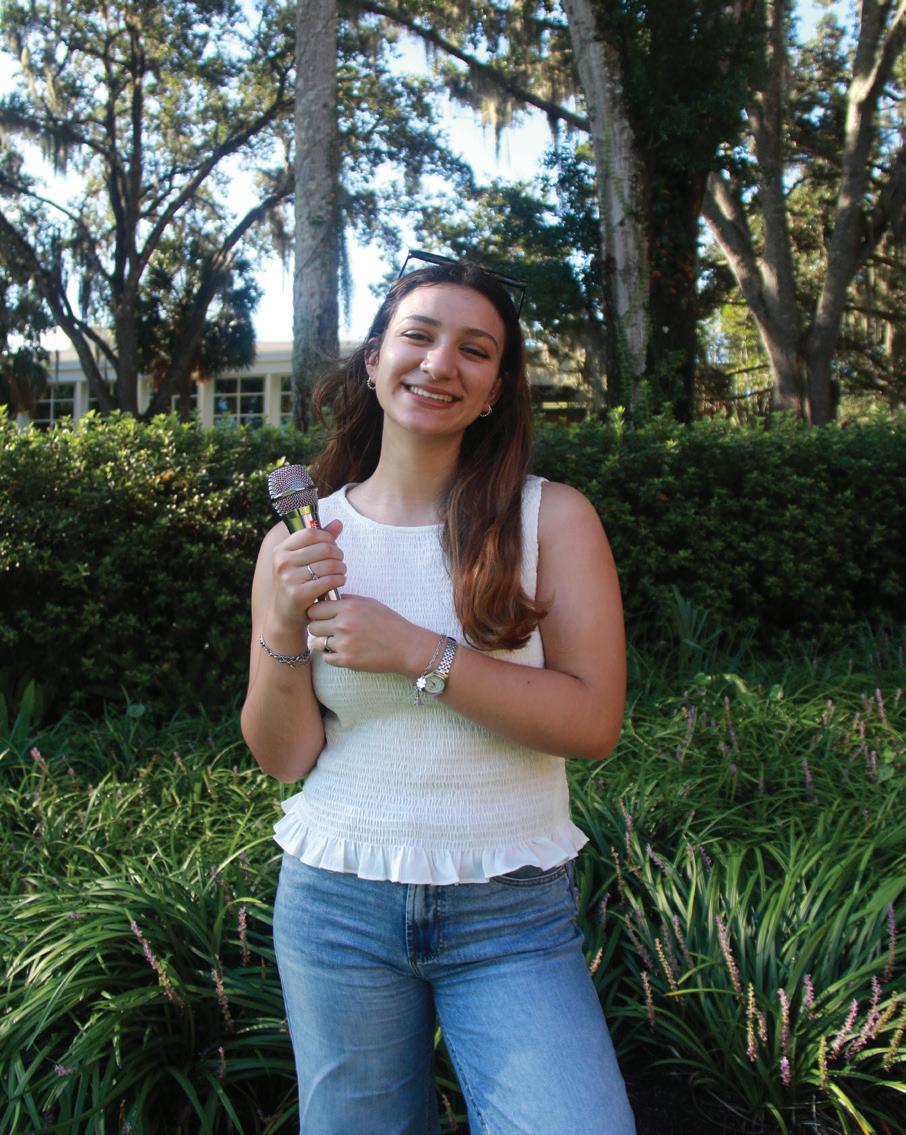































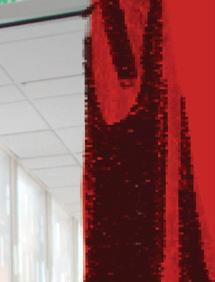
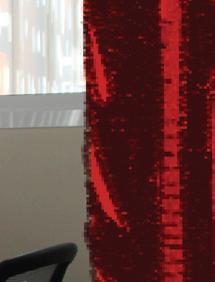









































































































Persephone spent her days in safety, growing and gathering owers in the meadow with her mother, Demeter, the goddess of the fertility of the earth.


Isaiah Roundtree ’29, is a Finance major with a passion for graphic design. “It started when I was about nine years old,” he recalled, after creating his “own little YouTube channel,” as he called it.
“I didn’t know how to effectively make thumbnails or channel art or anything of that nature, so I just started experimenting with a bunch of different software,” and Roundtree’s curiosity did not stop there. “It led me to doing graphic design as a passion.”
Nearly nine years of learning later, the passion Roundtree planted has blossomed into both a business and way of life. “I’m generally a more reserved person,” but with graphic design, “I can express my ideas of what I might not be specifically able to say in a form of art. And I really, really love that,” Roundtree said. He has also helped local gyms and student organizations alike to improve “anything from branding, [to] logos [to] graphic illustrations,” and find their visual voice in the same way graphic design helps him find his.
For Candela Tourné Munoz ’27, who is double-majoring in Communication and Media Studies and Digital Arts while double-minoring in Business Management and Music, the wildflowers in her life have always been music. “You know when you’re just doing something and you feel that you could do it your whole life? That’s me with music,” Tourné said. “Singing and writing songs has always been my passion.”
Tourné took voice lessons throughout her childhood in her home country, Uruguay.


remembers proclaiming to her parents, like a true Greek heroine, “I want to do arts. I don’t know what that means yet. I do know that I love music and that it has to be somewhere there.” Now, as a college student in the United States, she is “finding a way to keep that part of [her] alive, always.”




“You know when you’re just doing something and you feel that you could do it your whole life? That’s me with music,”











- Candela Tourné Munoz ’27
One day, Persephone strayed from her mother’s sight to pick wild owers in the woods, where Hades, the god of the underworld, stole her away to be his wife and queen.
Choosing to cultivate their passions in college was no easy feat for Roundtree and Tourné. Roundtree hoped to study graphic design or digital arts as his major, but his family urged him “to go for something a little bit more structured and viable for the long term… At first, it was pretty disappointing,” Roundtree admitted, “but I sat and I thought about it for a little bit. I’m the type of person where I try to look for the positive thing in everything that I do.”



































“There was a point in high school where, in the Uruguayan education system, [I had] to choose an orientation,” towards biology, humanities, law or the arts, but “I loved doing many things… [I] couldn’t choose,” Tourné explained. She

Because of his knack for numbers, background knowledge of businesses and branding and calling to help entrepreneurs execute creative endeavors, he settled for majoring in Finance. “I can eventually open up the possibility to work on [finance] more with graphic design,” Roundtree said. Respecting both his true passion and that his family had his best interests at heart, he sowed his own path to pursue both finance and graphic design. “I can take what I’m learning here






































at Stetson and sort of build upon what I already know with the graphic design.”
Tourné, too, was faced with divergence. Not many schools in Uruguay specialize in music, so Tourné auditioned at colleges across the U.S. Once she committed to Stetson University, she realized that its School of Music was much more classically oriented than she anticipated.
“I’m more like a contemporary singer,” she said, “I didn’t want [music] to become this pressure mostly, when it’s not even my style,” so instead of growing discouraged, Tourné got inspired. She needed to nurture music through her studies as a minor instead of a major, giving her both the chance to learn classically and the freedom to continue songwriting in the contemporary style.





This decision opened her eyes. “I can actually do more things than just music,” Tourné said. “I [knew] I [had] to take advantage of that because… I won’t have that chance back home.” Tourné saw coming to college in the U.S. as the perfect opportunity to major in Communication and Media Studies, another subject she had considered studying in Uruguay. She immediately correlated this to her musical aspirations, “a musician needs to communicate the right way… if you’re having a big performance… you need to connect with people also that way, not only through [your] music.” She also added a Digital Arts major, which gave her the resources she needed to learn how to independently record music and a Business Management minor, “just to have it there, to learn about it,” in her words. Tourné refuses to be put in a box.








“I’m the type of person where I try to look for the positive thing in everything that I do.”







- Isaiah Roundtree ’29


ough Persephone grew to love Hades and her reign of the underworld, she missed her mother and her days gathering owers. Negotiating with the gods, she agreed to eat pomegranate seeds that bound her to the underworld for half the year but allowed her to leave for the other half and bring spring to earth.





The challenges of pursuing their passions alongside education are a natural part of Roundtree’s and Tourné’s day-today lives. “For finance, it’s very, very structured and number-oriented, whereas [for] graphic design, it’s kind of free and open,” Roundtree said. Oftentimes, to focus on finance, he has to get out of what he deems his ‘design mode.’ “I sort of get into that mindset where I’m sitting down and I’m thinking of 100 different ideas in my head, sketching out a bunch of different things… I notice myself going into that mode in situations where it may not actually apply.”



Tourné shared that she is sometimes critiqued for her curiosity across multiple subjects. “People can [take it as I was]






not brave enough to do just music,” she said, “but some other people can see [I have] so many interests, so [I] just went for all of them.” Although the chatter has caused Tourné to muse about what it might have been like to simply major in music, she always concludes that her interests are in perfect harmony. “I feel happy with my decision… my majors are really lovely and I’m grateful that I have the chance to do it all.”
“I’m grateful that I have the chance to do it all.”








- Candela Tourné Munoz ’27



feel like I can always put music in there,” Tourné said.


Modern education made Roundtree’s and Tourné’s passions and education seem incompatible at first – they no longer pay that myth any mind. Perhaps even at Stetson University, the parthenon of the “Athens of Florida,” it is never too late to be like Persephone, outsmart the gods and get the best of both worlds.































So, Persephone became the goddess of spring and the queen of the underworld.

Roundtree has grown to see the beauty in blending “graphic design and [his] major of finance,” mentioning how “it shows how multi-dimensional you have to be as a person [and] as an individual in society.” Not only has his heart for graphic design rendered him irreplaceable in the cutand-calculated world of finance, but it has also helped him redefine his hopes for a future career. “Imagine I start working as a financial advisor and instead of me just talking directly to the customer… I could visually show what I’m talking about in terms of graphic design,” Roundtree said. For him, this is the wholeness of who he is.
As Tourné puts it, “I don’t feel pressured, so I never get tired of [my passion].”





























































In her coursework, she has enjoyed the flexibility to integrate music wherever she pleases. Tourné described a project for an audio recording class in which she decided to “write a song, record that song, try to produce [it] and have the writing part as well,” which connected to her major in Communication and Media Studies. “I love what I’m learning, and I I















































































Written by Jomar Rosado Graphics and Layout by Maria Latour





































































Tinglin, president of Stetson’s Caribbean Student Association, is a Jamaican American who takes her role as a leader seriously. When asked about her feelings on being the head of her organization, Tinglin attributes her devotion to the role to her predecessor. “It means quite a lot to me. I joined this organization as a freshman under Deja Smith, who was president at the time, and just watching the passion that she had,” Tinglin said. “She made so many sacrifices to ensure that the organization had the connections it needed to have different events [and] to ensure that the students on campus felt the vibrancy of our community.”


















Zeus: Supreme leader of the cosmos and king of the gods



The legend of Zeus is one of the world’s most well-known stories. The all-powerful god who sits at the head of the table on Mt. Olympus; his name is synonymous with leadership, power and justice. On Stetson’s campus, we have Zeuses of our own – not ones that reign from a cloud, but from the executive boards of organizations with leaders who oversee aspects of student life.





Tinglin further emphasized the importance of cultural organizations by recognizing that CSA accomplished this, “while also being a home away from home and having the foundation to build friendships.”
“I can just ensure that people understand what the Caribbean is versus some of the things that we often hear about the Caribbean, because it’s very diverse,” Tinglin said. “With Indo-Caribbean, Afro-Caribbean andLatin-Caribbean cultures all coming together; it's so important that people truly understand what we’re all about. That’s what it



















means to me to be president.”

















can reach out to. You don’t say, ‘Oh, I want
Tinglin’s presidency is a tool she uses to educate people on the realities of the Caribbean and its people as a whole. She has represented her own definition of leadership through her action in oncampus roles. “Student leadership to me is being someone that just lives [their] life as a good person, as a kind person, someone people can reach out to. You don’t say, ‘Oh, I want to be a leader.’ You say that you want to be a good person and, being a good person, people will start to look up to you and see you as someone that they can reach out to,” Tinglin said. “Over the past few years, I’ve been able to connect and help people in different ways that they needed on campus, whether it’s through finding resources for financial [assistance] or any other obligations that they may have, to just being someone that they can talk to every now and then and help connect them with something in either their area of interest or just [help them for] personal reasons,” said Tinglin.























































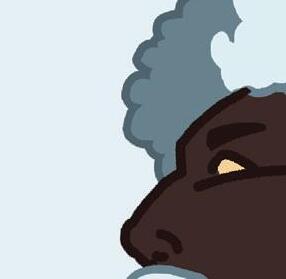


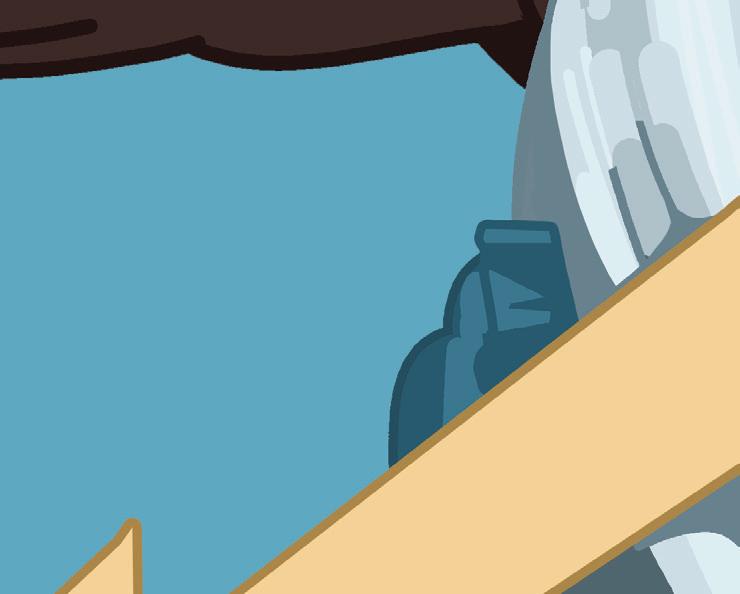



















































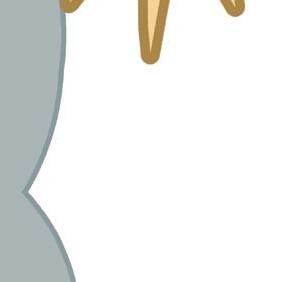








Thomas, president of Stetson’s Black Student Union, is also a Jamaican American, herself. When asked about her role as the head of her organization, she stated, “My purpose as the president is to basically be a guiding hand and a helping hand to anybody on campus, any black student - but also non-black students - who want to learn more about the black community…I'm basically here to create a community on campus where black students and even non-black students can also feel that there is nothing to be afraid of…No question is too crazy… we are here to educate and teach and love as the black community at Stetson University,” said Thomas. On campus, student leaders like Thomas should be able to educate others and use their influence to build camaraderie through their teachings, in turn creating a welcoming atmosphere. Tierra’s thoughts on her role as a student leader align with these values. “As an individual on this campus who has influence, a lot of people come to me for a lot of different



things,” Thomas included the example of “a personal problem they might have had with another student or professor- … Racist things do happen sometimes on campus – so people come to me for that – and they also come to me for community.” Although Thomas loves her position, she is still human, so being a leader can take a toll on her, just like it would to anyone else. “It's a lot to take in and it’s a lot to comprehend. Just knowing that what I say and what I do [has meaning]. If I give somebody the wrong information [I] could harm them potentially or if I make someone feel like they’re not accepted I could [possibly] stop them from making a whole new community of people,” said Thomas. Even with all that on her mind, she recognizes that her efforts are very much seen and appreciated. “It just made me feel so amazing to know that what I’m doing actually has an impact. People actually see me, and see what I’m doing and see what I’m trying to do and it’s not just all going to waste,” said Thomas.








Written by De'Vanese John-Baptiste Graphics and Layout by Parker Moore


Eileithyia: goddess resting at the threshold of birth
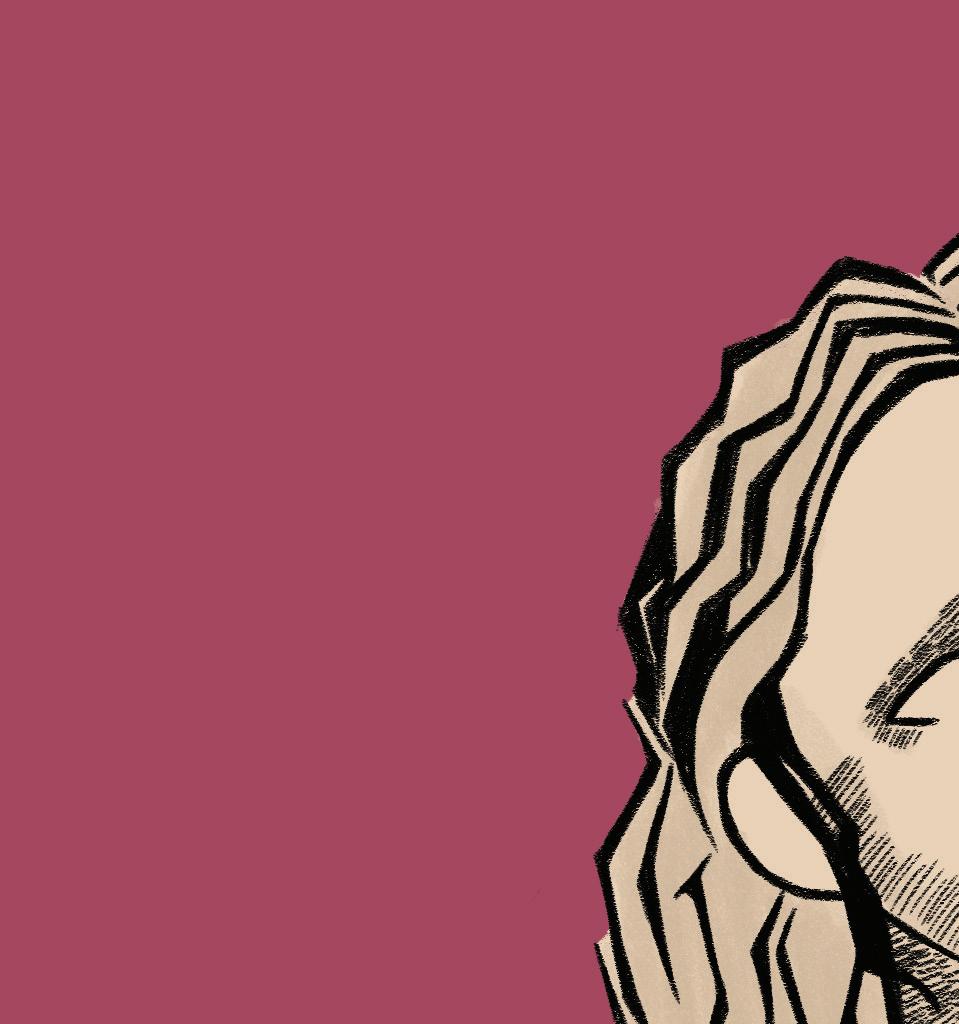



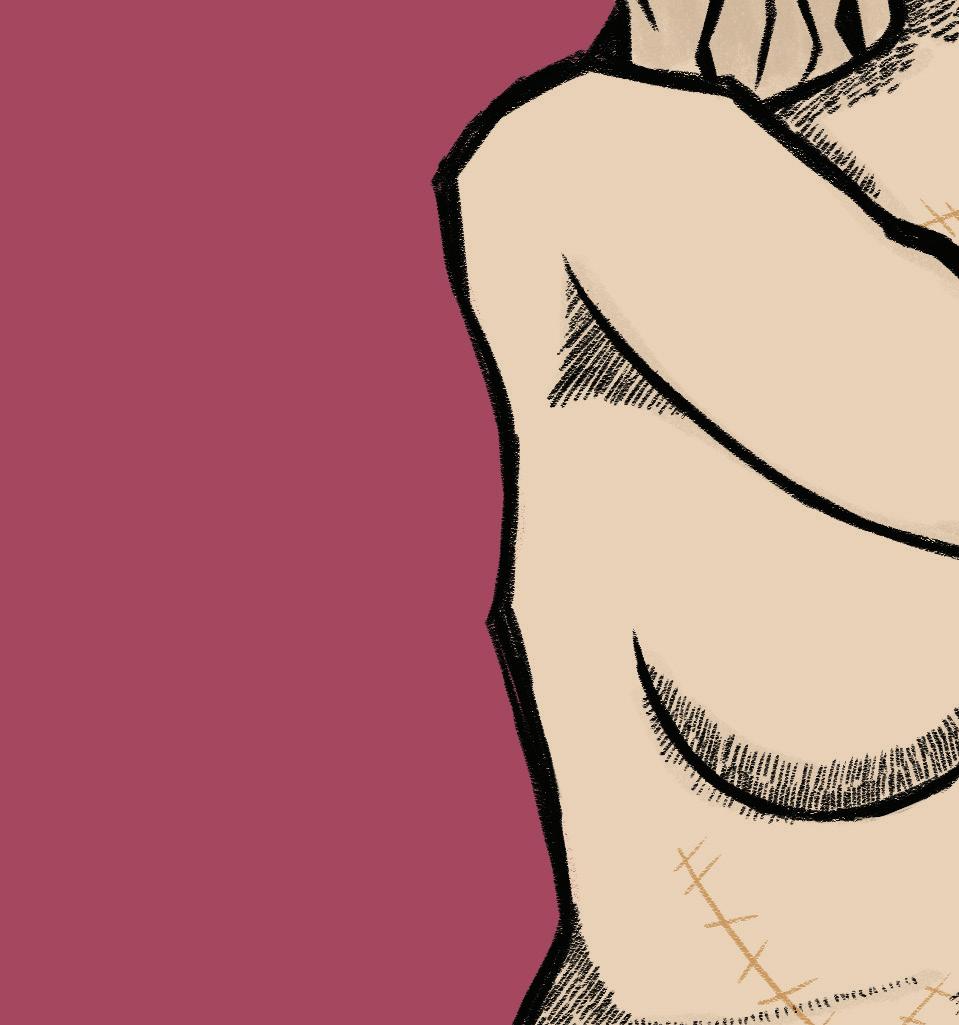
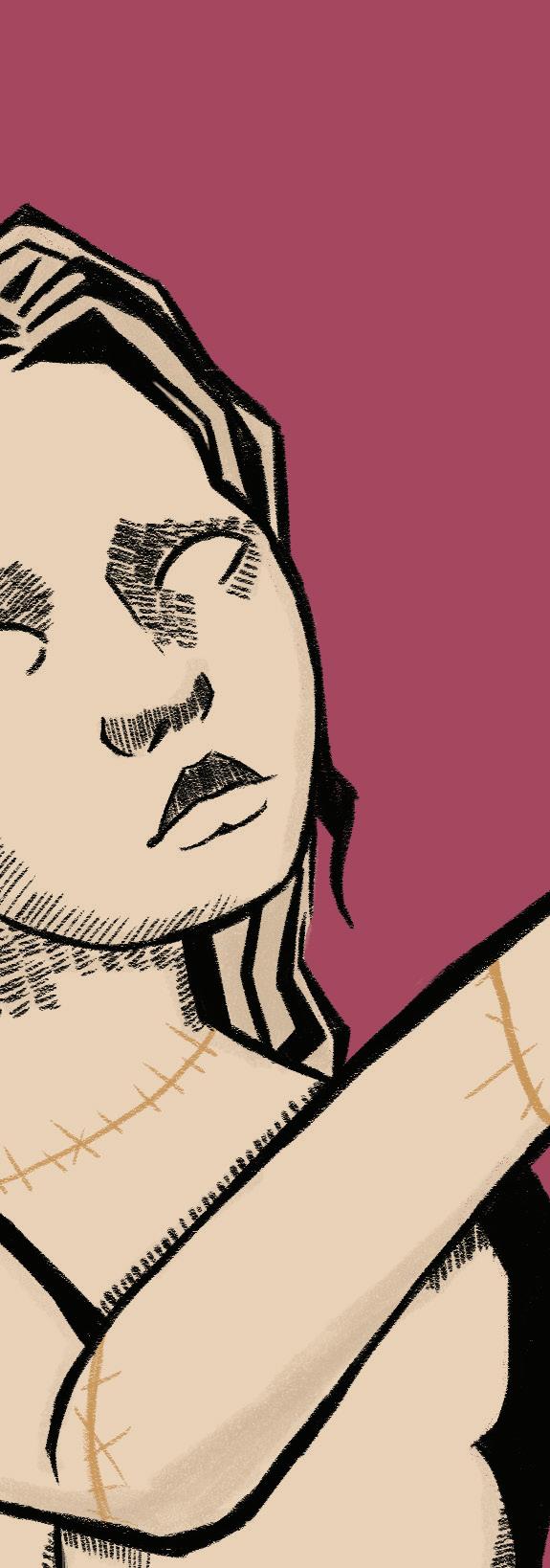
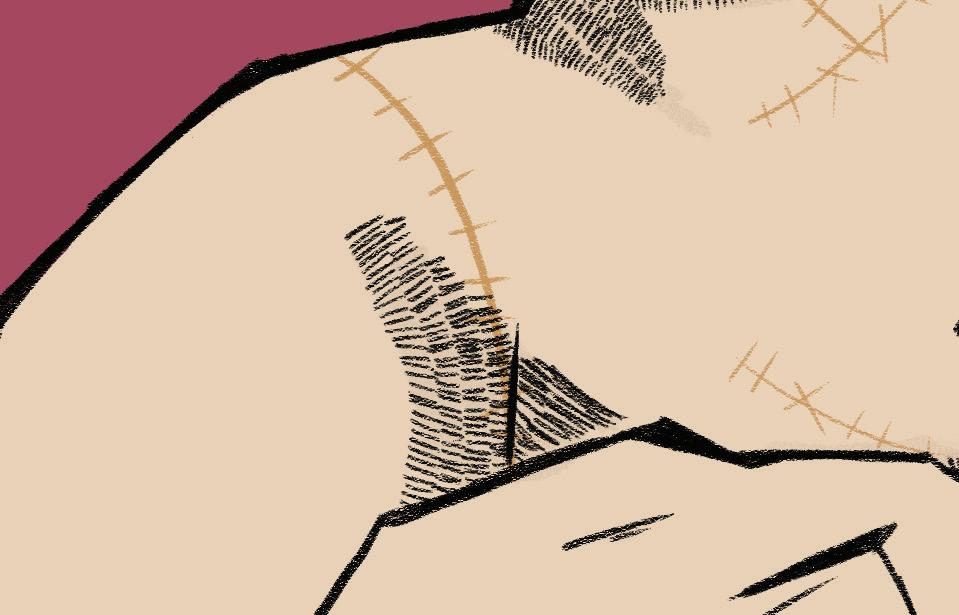











“A lot of people just don’t know… people were like: ‘What does pro-choice even mean? What does prolife even mean?” said Kinsey Tumlin ‘28, the CoCoordinator of Social Media for Hatters for Life, of students attending Stetson’s Involvement Fair.




































Tumlin shared what being anti-abortion means to her, advocating for all life to be born, except “in the case where the mother would not survive. But again … I think you could easily deliver that baby as well.” Real-world situations complicate this stance. Medically, it is often deemed an unnecessary risk to patient health to attempt early delivery or a C-section before 22 weeks of gestation, with a near non-existent chance of survival for the developing fetus. However, abortion as a preventative measure for the patient’s health remains a source of diverging









beliefs and perspectives. give of




One aspect of this discussion is often fear surrounding the safety and impact of procedures themselves. Tumlin takes issue with the language of abortion-rights advocates: “An abortion is still a medical procedure. Especially in cases of rape, you’re going to have your body either give birth - and bring a new life out of that and [be able] to bring a positive out of [a] negative – or they are going to go in and scrape your insides … The pill, it’s not that easy, like ‘one-two-three,’ you’re fine. There [are] women that have side effects and things like that.”






There is a factual basis to some of Tumlin’s words. For example, medication-induced abortion is more likely to result in an incomplete abortion, requiring surgery to remove leftover tissue. Abortion, like any other medical intervention, has some potential complications – although serious complications



requiring immediate intervention only happen in less than 1% of cases.



Still, if you’re reading this article, you are probably old enough to have heard some horror stories about abortion. Jessa Ward ‘26, a former member of Hatters for Life, described hearing of “people who were not fully informed on what the process [of abortion] would be like [or] the implications of it afterward. [Such as] people who had problems getting pregnant later on in life when they were trying to. It’s not just a one-and-done simple solution. There are lasting effects, physically, mentally.”
Ward describes a concern most have probably heard. Yet abortion and infertility are only distantly related. These ‘complications of abortion’ often arise from untreated infections and scar tissue accumulating over time. People who get an abortion more commonly experience infertility later in life due to hormonal shifts or people simply getting older.


The ladies of Hatters for Life have personal experiences with abortion. “I was actually born with a congenital heart defect … At my mom's 18-week anatomy scan, the doctors were like, ‘We know something is wrong with the heart. Most people in your situation would probably have an abortion,’” said Tumlin. “If I [were] someone else's child, I don't know that I would be here.”
Tumlin offered further insight, “I’ve had 3 open heart surgeries. All before I was the age of 2 and may need another in the future.” This sounds like nothing less than a miracle. Tumlin is physically, no doubt, a warrior, but also benefits from being born into a family with the financial stability to cover her extensive medical care. Equally astonishing is Ward’s transcontinental story.
There are so many children from China that were never given the chance to live,” said Ward. “If I don't speak to it, who will? The children are the voiceless among us, and so somebody has to be the voice for them.” Clearly, the adoption and foster care systems serve a purpose - yet, their infrastructure depends on the majority of parents or extended family being able to reunite with their blood-related children. Without social services, this is difficult.
While Tumlin recognizes placing children who are born into disadvantaged families is challenging, she argues this is not grounds for abortion. “Everyone’s life is hard. We all have our hardships. So why are we going to end this life, because they might have a hard life? … To me, abortion is saying ‘Well, you don’t even deserve this life, you don’t even deserve to try.”







if the foster care system were better than it is now, then it would be seen as a better option

- Jessa Ward ‘26

















































While private adoption is inaccessible to many, ranging anywhere from 20,000 to 50,000 in the United States, Ward is a rare success story. “I’m adopted from China, and I was born during the one-child policy … they were forcing abortions on people. Just the whole concept that somebody has the right over whether somebody else lives or dies.


































































However, with over 60% of Americans selfreporting as living from paycheck to paycheck, it is a reality for most potential guardians they won’t be able to provide enough for their children to prosper. After all, we live in a nation with one of the highest rates of homelessness in a developed country. Ward acknowledges, for “these kids who are born in unfortunate circumstances … if the foster care system were better than it is now, then it would be seen as a better option … because it is broken and no system is perfect. That’s just in general, but it does give children a chance at a good life, rather than just eliminating it altogether.”




Despite recommendations survivors seek “punishment” for perpetrators, less than 1% of rape allegations filed in the US ever make it to a jury trial. Women who are placed in the position make a myriad of decisions. It may be the privilege of inexperience that makes members of Hatters for Life more likely to reduce conversations around sexual violence into one of ‘punishment’ - failing to see that the only tool at the disposal of those who suffer sexual violence in this system is often restoration, the bargain of constructing wholeness from what was taken.

Throughout conversations with the members of Hatters For Life there was an easily admirable idealism. However, there was also the sense their convictions sometimes outpaced their familiarity with the medical and social realities contextualizing the abortion debate. Fighting for life requires understanding all life - a seemingly unhuman task in its largeness - yet some individuals, who have lived through the traumas Hatters for Life trivialize, have no choice but to wear their personal understanding like a second skin. It would be a disservice not to point explicitly to where grounded opinion crosses the line into appropriating lived experience. One such instance is the organization’s stance on questions pertaining to sexual violence. “Abortion does not take away the trauma from being raped, it just adds to it,” reads a statement present on their social media at the time of this writing.

We have all grown up with our “picket-fence” fantasies. Whether a mansion or a suburb, we have mulled over whether we believe them to be attainable. This is more than an idea. The family we imagine alongside us is not abstract but one we try to conjure in vision boards and answers to questions on dating apps. It is not the job of our bodies with dreams, aspirations, and – yes, traumas – to carry what others tell us to. The emotional and psychological effects of abortion are not uniform, and like sexual violence, both the level of social support available and the ability to express agency in the decision-making process play a part in determining a survivor’s experience in the aftermath. If agency is not restored to survivors of sexual violence in deciding what happens in the aftermath of their assault, it continues a harmful negotiation that again negates their right to consent.

When questions of potential psychological harm to the mother in cases of sexual violence are posed, Tumlin urges others to consider, “What did the baby do in this situation? Nothing. Why not have a positive come out of this horrible situation? I’m not saying it’s going to be easy, but I think we should punish the rapist and not the victim. Because I feel when we’re telling women, ‘Oh. You need an abortion. Oh. It’s going to help you.’ No, it’s not and I don’t want any women to look back and say, ‘that was a horrible experience but I should have had


my baby.’”


















Black women have the highest abortion rates in the United States. These are facts one may have expected to hear in such a contentious dicussion - only it never came up. This echoes a larger silence surrounding the factors driving abortion rates, which include a lack of proper health resources and sex education, economic insecurity, and yes, racism. The mortality rate for abortions in the United States is 0.0008%, a tempting safety net if you belong to the most likely demographic – in fact, three times as likely as nonHispanic white women – to die in childbirth in the U.S. These are the experiences Hatters For Life and organizations like them try to speak to.














Ward shared her personal disagreements with Hatters for Life stem from how she believes she should carry herself as a Christian, which is with “the heart of hospitality and loving the whole person, and not just using them as a point in your argument, but lovi
























actually integrating that into your life in the ways that you can show up for them …You know, treat everyone with kindness and respect again. And it felt like sometimes that was lacking … you, [Hatters For Life] are not exactly leading with the most empathy and compassion.” Ward’s statement showcases a difficulty at the crux of humanity. There is ease in championing for the beginning of a life you are not armed to disagree with; the difficulty comes in continuing to be an ally in systems governed by race, class and religion, just to name a few.









not just using them as a point in your argument, but actually integrating that into your life in the ways that you can show up for them


United States’ Republican Party during a time when many middle-class white men believe their voice is shrinking. Sean McDonough, a member of TPUSA, wrote a tribute to Kirk stating, “He had this magic that embodied the true spirit of the USA…He debated, respected, and challenged others, never putting them down.”Queen-Serwe described Kirk’s death as a “hard hit on us [Hatters For Life] as a group and as American people.” The rest of the statement she offered landed as a commandment, “If you would like to write something. Write on the violence in America. The political violence. And how it should be stopped.”





Birthing people are not a monolith and their experiences are highly variable. Whether these lives would change for the better, for the worse, or simply end in childbirth are not circumstances anyone can foresee. No law guarantees successful incubators for someone else’s pipe dream of a meaningless ‘equality’, especially when the burden of fixing uneven odds is placed on ‘resilient children’.
While the president of Hatters for Life, Maria Queen-Serwe ‘27, originally agreed to an interview, these plans unfortunately fell through with the untimely murder of Charlie Kirk, the founder of Turning Point USA (TPUSA), an organization that has recently begun efforts to open a chapter on Stetson’s campus. Kirk was a polarizing figure in both his life and death, yet is also a symbol of the American way of life. That much can not be argued. Although not a sitting politician, Kirk became a spokesperson for the
Kirk is an accurate representation of the American people, shrouded history with race and all. An extremist in his view that America “made a huge mistake when we passed the Civil Rights Act in the 1960s”, he made a career partly out of degrading minority groups and implicitly categorizing them as un-American. The “gang-related” violence he pointed to in his final words is a dog-whistle for outsiders the American system does not wish to assimilate. This sense of belonging or un-belonging unconsciously narrates what is recognized as “political violence” in this country and what is coined as “political difference.” The continued stance of self-titled “prolife” organizations like Hatters For Life behind him is hard to reconcile with their advocacy for valuing life in other personally motivated areas.
We live in an order where a white man can massacre one of the movement’s disciples and Historically Black Colleges and Universities and “transgender girlfriends” must take shelter. Regardless of whether people believe Kirk intended to endorse racial violence, we live in a highly hierarchical order where intent is not needed to feed supremacy. Hate, when put into the political space, is a hand extended to those who would like to incite violence. Kirk’s statements, including that “the American Democrat party hates this country. They wanna see it collapse. They love it when America becomes less white,” while opinion-based, emulate a call to action by tying the potential destruction of this nation to a racial makeup.
Statements like these are why America is not a land where brown mothers can have children without fearing the system will weaponize their language, culture and in extreme cases, citizenship, to remind them they are unwelcome. Statements like these are why black mothers cannot hope that systems

































of welfare or generosity will fill in the gaps if they choose to have children while experiencing financial insecurity. To be a birthing person, with insurance, in America comes with a $2,000-$3,000 out-ofpocket payment documenting the arrival of your newborn. Being anti-abortion in America is an uphill battle, entangling a long history of shoddy infrastructure.
America has a problem. It has taken pride in the exclusivity of being ‘the richest nation in the world,’ forgetting that to be so exclusive requires exclusion. The passing of Charlie Kirk, while horrific, has also been a display of tone deafness while in a nation where lynching, police brutality, commercial incarceration and deportation of everyday people is still routine and tolerated under the moniker of “political opinion.” May this nation recognize that desperation has teeth and suffering cannot be contained for the ease of the many. May the nation begin to recognize that what the beautiful, diverse groups of people in this nation ‘deserve’


















has been morally bankrupted by the lack of steps taken to close the generational wealth gaps and lack of humanization created by our foundational sins. What is clear is one cannot outrun poverty, the violence poverty perpetuates, and that, despite unforeseen consequences, the system is working as designed. May the families of those who have lost loved ones on all sides choose to continue on their legacies with love, so no one is mowed down in broad daylight - whether they look like Charlie Kirk or Jabari Peoples.
e Reporter encourages a civil and respectful dialogue. Harassment or bullying of individuals who produced or were mentioned in our articles will not be tolerated. as


In dedication to: Adriana Smith, black and brown women navigating this climate in historically hyperpoliced bodies, the starving women in Palestine who will never again hold their children and all women who deserve to plan their tomorrow.






















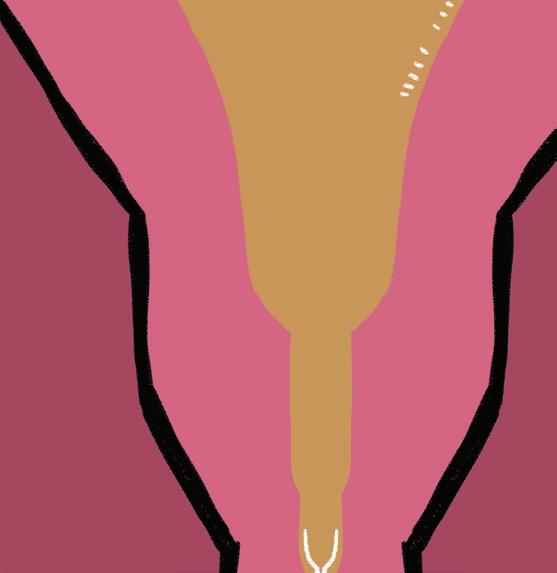





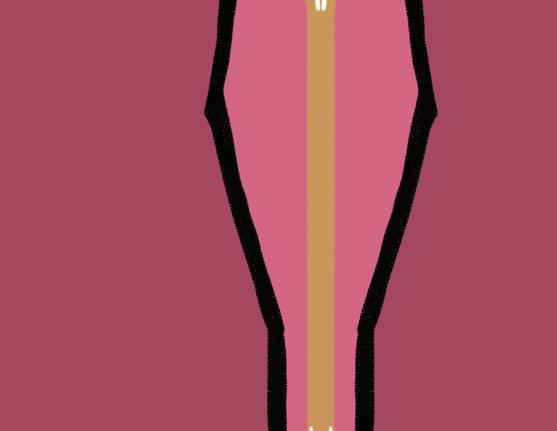




















































































































Written by Nathan Pyle Graphics and Layout by Riley Cate









Prometheus: the god who brought Anthropos technology through re
Back when the world was dark and the cold was suffocating, a legendary figure brought fire down from the gods, ensuring the comfort and continued survival of the human species. A titan of great empathy towards mortals, Prometheus paid the ultimate sacrifice for his selflessness. Those familiar with the myth may aptly assume that the aforementioned sacrifice for bringing fire was the eternal torture he faced as punishment. While the physical toll of a liver-eating eagle is certainly overwhelming, one must imagine Prometheus as equally tormented by the damage he caused to humanity through his elemental gift. Fire, despite being a fundamental aid in survival, can easily become a ravaging force of violence when left unchecked. Earlier this year, Prometheus’s gift tore through Los Angeles due to worsening climate change, taking 440 lives and destroying around 16,000 homes. This mass wildfire is not an isolated incident, but is one of 47,183 other wildfires that happened in 2025 alone. Ultimately, while Prometheus’s best intentions were at play, fire takes as much as it gives.
It is easy to akin the figure of a “modern Prometheus” to the CEO of OpenAI, Sam Altman. One of the 11 founders of OpenAI, alongside notable names



like Elon Musk and Greg Brockman, Altman is a powerhouse in the generative artificial intelligence (AI) field. According to the OpenAI website, Altman’s organization intends to “advance digital intelligence in the way that is most likely to benefit humanity as a whole.” Certainly, Prometheus would find this mission admirable as his intentions were fundamentally the same. AI, much like fire, can be beneficial if used properly; however, it can cause a substantial amount of harm if left unchecked. Unfortunately, it is hard to ignore the impact of AI’s exponential rise on the average college student, especially those who are now entering the workforce. According to a Stanford study, the most AI-exposed occupations have experienced a 13% decline in employment of younger workers (ages 22-25) when compared to occupations in less exposed fields.
“AI will lead to a knowledge vacuum when those skilled employees move on or retire.”
-Dr. Daniel Plante












While this article mostly focuses on the more negative effects of generative AI, it is important to acknowledge that artificial intelligence has the capacity to aid humanity greatly.
One of AI’s greatest contributions to society is its ability to identify cancerous tumors before they become malignant.
CHIEF


















































“the most AI-exposed occupations have experienced a 13% decline in employment of younger workers (ages 22-25) when compared to occupations in less exposed fields.”












-A Stanford Study






(Clinical Histopathology Imaging Evaluation Foundation) is able to recognize 19 different types of cancer, boasting an outstanding 94% detection success rate on average. Kun-Hsing Yu, a chief hand in the creation of CHIEF, harnesses the fire created by Altman by using ChatGPT, a product of OpenAI, as CHIEF’s foundation. Because CHIEF is an AI specially trained on cancer detection, it outperforms other AI models by 36%.










threatened when companies like Salesforce refuse

to hire any new software engineers because AI has improved engineering productivity by 30%. Whereas these jobs that require little experience are jeopardized by the adoption of generative AI, positions that require more experience and skill have consistent employment rates because their skills are harder for AI to replicate.








Beyond cancer, AI is also able to efficiently identify rare diseases that doctors might overlook. The presence of artificial intelligence that stems from OpenAI’s models has the potential to save countless lives when applied to medical technologies. While AIs like CHIEF have a prominent place in medical fields, they’re not rendering doctors useless; AI rather serves as a tool to make doctors more efficient at their jobs. In a utopia, this is the purpose of AI: to aid, rather than replace. Be that as it may, we do not live in a utopian society, and the thought of being replaced by AI before one can even enter the workforce is a fear that rests in college students.






According to Dr. Daniel Plante, a Stetson professor of computer science, the replacement of low-level jobs with AI “will lead to a knowledge vacuum when those skilled employees move on or retire.” Companies need to realize that a job force founded solely on AI will collapse on itself when faced with more complex tasks, which is why low-level workers are necessary for a company to thrive. Plante claims that some companies have come to realize this













One such field that has been greatly affected by the rise of AI is computer science; entrylevel programmers hired to write code line by line are rendered irrelevant by AI tools that can write large amounts of the same code in a fraction of the time. Stanford lists software engineering as one of the AIexposed professions with low entry-level employment, alongside customer service representatives and accountants. No wonder software engineers are so







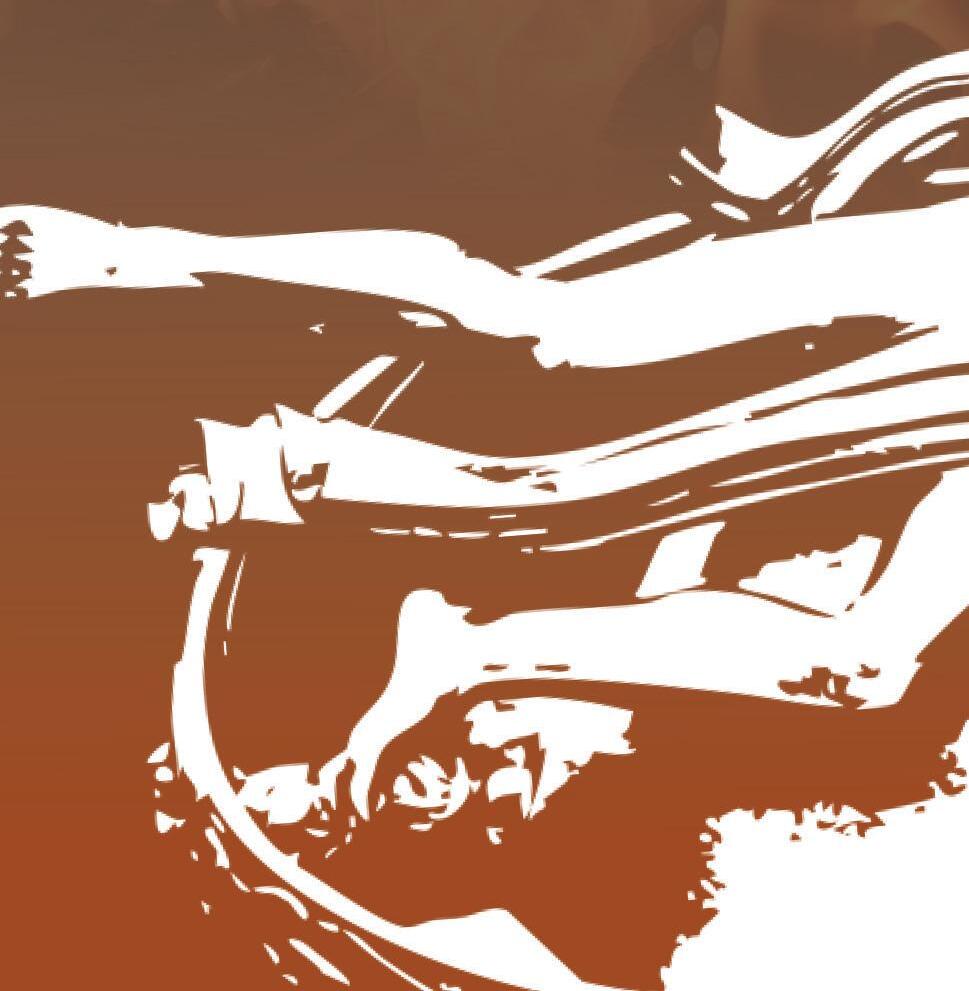


“knowledge vacuum” is inevitable given their current trajectory. Until that inevitability is fully realized, it is important that graduates embrace this change rather than compete with it, however difficult that may be. The recent introduction of generative AI in the workplace has inspired a resounding sentiment that AI will not replace you, but rather, an AI ‘expert’ will. This idea presents a false choice between the two ideas when, in reality, both are true. Plante finds truth in the latter half of this claim, saying that “there has


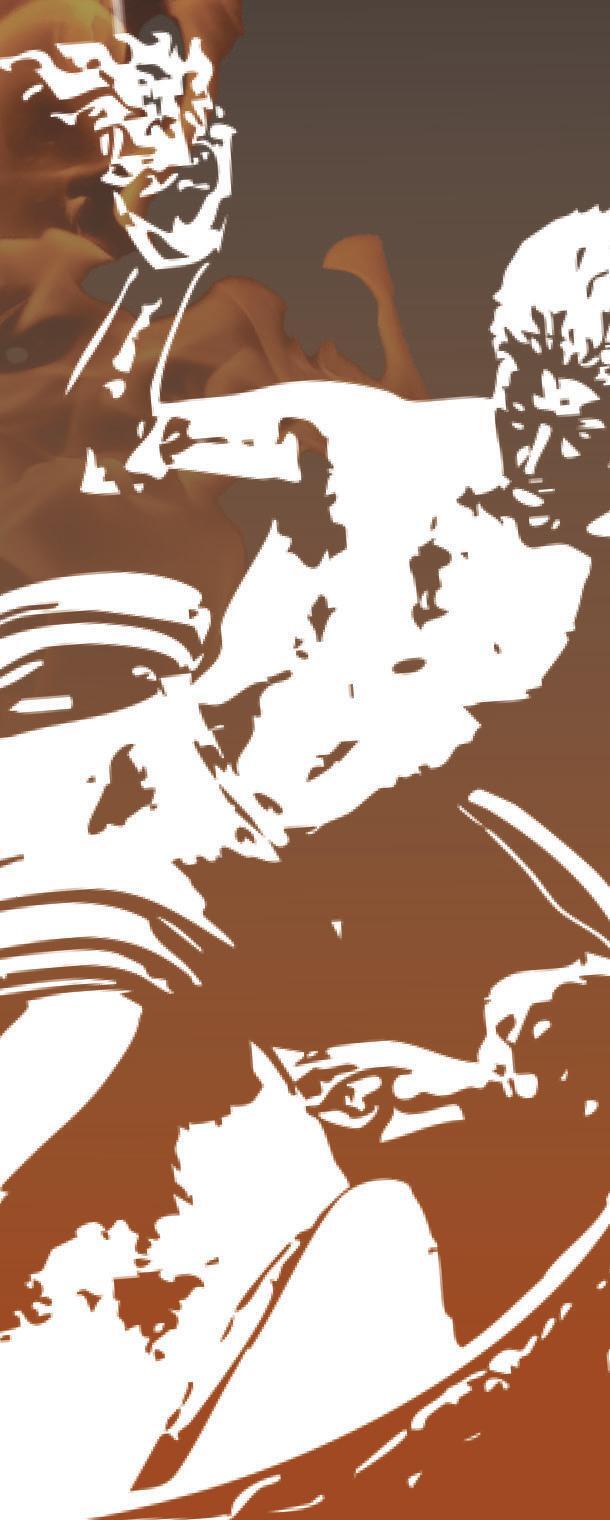


like problem-solving, creativity, and collaboration”. As previously stated with Salesforce, AI has and will continue to replace jobs that require a less extensive skillset. However, the ability to use AI as an augmentation will greatly aid one’s chances in finding a job post-graduation. Per the Stanford study that has become the feet upon which this article stands, occupations that treat AI as a supplement rather than a replacement have actually experienced growth in employment rates recently.




been an increase in demand for graduates who can use AI effectively to complete not only simple tasks but increasingly complex ones as well as combine it with human skills







Generation Z has grown alongside AI, and now that the floodgates have opened, it is impossible to ignore the massive impact that AI not only has but will continue to have. Therefore, the only solution to thrive in this current environment is to control AI, not let AI control you. Those who can harness fire are





“there has been an increase in demand for graduates who can use AI effectively to complete not only simple tasks but increasingly complex ones as well as combine it with human skills. like problem-solving, creativity, and collaboration”.

-Dr. Daniel Plante


Written by Nico Alonso

Graphics and Layout by Maria Latour





Plutus: Blinded by Zeus, this god scatters wealth without aim
At Stetson University, money seems to move like Plutus, the Greek god of wealth – blindly and capriciously distributed, while students are left to piece together whatever happens to come through the grapevine. Budget cuts slice through departments, leaving faculty, staff and students scrambling for scraps as whispers of worry echo against the walls of these once hallowed halls. As Florida’s oldest private university, Stetson draws substantial revenue
JuSt [don’t] do It
Stetson has invested an unprecedented amount into the athletics department, but lacks justifiable revenue to match. According to a Report from the Chair of the Faculty Senate, dated May 2025, the Athletics program operated at a $13.6 million deficit and, for the past seven years, it has run at an average annual deficit of $11.25 million. University President Christopher F. Roellke defends these numbers by noting that “there are only 12 institutions in the entire United States that have a favorable balance sheet when it comes to intercollegiate athletics.” That may be true, but not quite as many schools stand as deep in the red as Stetson. With such wide margins of uncorrected error, surely the money has to come from somewhere, right?
Believe it or not, the subsidies that keep Division I athletics afloat at Stetson come from its students. The May 2025 report states plainly: last year, each non-athlete student paid roughly $6,013 of their tuition, over a third



through tuition, auxiliary income through things like summer programs, gifts and investments. Our robust endowment – the investment fund that provides ongoing income for the university’s needs – supports many of the institution’s longstanding pillars. But what good is this bounty of resources if they are being consumed faster than they can be replenished – especially when it's for purposes not central to the mission of the university?















of the average bill, solely to subsidize Division I athletics for the 17% of students who participate. There are around 350 D1 schools, according to the NCAA. There are nearly 6,000 colleges and universities in the country, according to the National Center for Education Statistics. As it currently stands, Stetson has 18 Division I teams and approximately 460 athletes. These numbers are comparable to the likes of the University of Florida and Florida State University, which both boast 19 teams and approximately 500 athletes. However, one cannot compete where they do not compare. The Hatters absolutely do not have the cult following of the Gators or Seminoles that rake in sales from tickets, merch and broadcast contracts, nor do we have tens of thousands of students to strike a proportionate balance between athletes and nonathletes. According to the Sports Business Journal, UF athletics saw over $200 million in revenue













in fiscal 2024. Meanwhile, Stetson can barely pack the ‘stadium’ we share with the local high school.
According to an anonymous member of faculty, Stetson would gain $8.2 million if the Athletics Department shut down and we lost all athletes, gain $11.2 million if the Athletics Department closed and we kept all athletes as non-athletes and gain $15.9 million if we closed the Athletics Department and replaced them with new, nonathletic students.
Let me assure you, this is not a battle cry to dismantle the Athletics Department. This is a wake-up call for the administration to stop placing so much emphasis on facets of Stetson that are not central to the institution’s goals of academic success. The desire to have a strong Athletics Department full of winners, no matter the cost or how much is lost, takes vital resources away from student-facing departments.
Much of this cost is poured into Stetson’s football team.
Since its reinstatement in 2013, after an unsuccessful “athletics expansion initiative” from former university
President Wendy Libby, the Hatters have yet to see many notable wins – let alone a championship title. At the time of writing this, Stetson Football has lost three out of four games played this season, including a notable loss against Harvard, 59-7. My cohorts in student journalism over at the Harvard Crimson made quick work of this embarrassing show-up with a whole article about it titled, “Harvard Football Dominates Stetson 59-7 in Season Opener.”
I was told by President Roellke and Chief Financial Officer Jeremy DiGorio to look into the fact that the Atlantic Sun Conference (ASUN) and Western Athletic Conference (WAC) will soon be forming a consortium. They implied, as did the ASUN press release, that this was a saving grace to make Division I sports more affordable, but neither gave immediate specifics as to how.
So why keep pouring funds into a program that isn’t delivering results – not for students, not for faculty and certainly not for Stetson’s reputation? Although there may never be a clear answer as to why, we can always be sure of who makes these decisions.









When we find ourselves stuck in financial insufficiency, there is usually a loose plug waiting to be pulled. That being said, oftentimes we tug the plugs of our own life support, just to say we went out with a bang. Stetson operates at a total asset value of $741 million – $416 million of that makes up our endowment, according to Roellke. A of this endowment acts as an unrestricted portion, or quasi-endowment, from which “Stetson continues to draw unsustainably,” as noted in an Update from the President dated July 28, 2025.





e Board of Trustees has required “…at least $3 million in permanent structural budget savings in each of the next three scal years.” Here are some ways this is achieved: strategic building closures during the summer and other energy efficiencies, operating budget cutbacks in Campus Life and Student Success – which include reductions in summer orientation and other student services – and a hiring freeze. According to CFO DiGorio, “$2 million of those [cuts] were based on compensation, [so] about 29 positions across departments, 45% of those positions were vacant.” What happened to the other 55% – who can say?














taking thE “truSt” out of truStEES
Trust, in both its forms, is essential to university function.
For those at Stetson, trust is the belief that their university will honor its mission to invest in the future of its community. For the Board of Trustees, however, trust takes on a second definition – a financial trust: a hedge fund to be managed, guarded and, when necessary, cut.
The Board of Trustees acts as the group responsible for fiduciary functions on campus, and the Faculty Committee on Finance and the Budget (FCFB) acts as its adviser; the two are at odds over how Stetson will manage its finances going forward, finding very little common ground.
In March of 2025, a Resolution from the FCFB was unanimously submitted to the Faculty Senate, delineating multiple instances of financial mismanagement. For example, the budget for the DeLand campus in fiscal 2024 saw a net deterioration of $7.3 million from April 2024 to June 2024, closing with a $6.7 million deficit – despite receipt of a boosting, one-time $5 million gift towards operating expenses. DeLand campus also boasts a structural deficit that exceeds 10% of the budget –which is more than $10 million, by the way. This deficit stemmed primarily from losses in the athletics program, which were at least $13.6 million in fiscal year 2024. While the FCFB attempts to extinguish fiduciary fires, the Officers of the Board of Trustees do everything in their power to ensure that the best optics are presented to the student body. Although, in theory, this structure could work like a well-oiled machine, it more so functions as a broken game of telephone – except not fully as a result of mixed-up numbers and figures, but seemingly as a result of higher-ups cutting and crossing wires.
iN ATHLETiCS, WHiCH WENT OVER BUDGET BY $2
MiLLiON iN FiSCAL 2024 ON AN OPERATiONAL BUDGET OF JUST OVER $4
MiLLiON
"


The resolution states that the FCFB has “repeatedly recommended cost-saving measures for financial sustainability,” such as a COVID-19 contingency plan and its recommendations to improve budgeting from Spring ‘23. The FCFB also made a report in agreement with the Budget Office to share a report that showed a “$13.6 million cost of athletics.”









Despite these attempts to diagnose and remedy, the resolution also states that “the President shared that report with the Board [of Trustees] Chair, but also shared a draft version of the report that includes erroneous numbers about athletics and academic revenues.” Not to mention, “the Chair of the Board Financial Health Committee received both reports” – the agreed-upon version and the “erroneous” version – yet “neither report was included in that committee’s materials for the February 2025 meeting.”


















Not only are there misreportings of where the money is going, but the resolution states that the FCFB has witnessed “executive payment practices from the Board of Trustees that are excessive and inappropriate for a private nonprofit university.” In fiscal 2022, $249,000 was awarded to the former university President, Wendy Libby, along with a yearlong “sabbatical” for the 2020-2021 academic year. This sabbatical, awarded to her by the Board of Trustees, was in direct violation of faculty policy on sabbatical leaves, as “faculty must return for at least one year after a sabbatical.” Libby stepped down in 2020, saw to her sabbatical for the next year and never returned – on top of that, an additional award of $717,000 was given to her during the sabbatical itself. Independent scrutiny has also















echoed the concerns of the FCFB; in an audit commissioned for fiscal 2024, available on ProPublica, the auditor reported a “material weakness in Stetson’s internal financial controls,” raising doubts about the university’s ability to reliably track and report funds. The audit also flagged “conflict-ofinterest transactions” involving key officers and affiliates, required to be disclosed on the annual tax return.
resolve budget problems despite four consecutive years of FTIC enrollment under 700 … cost controls are strict in academics, where any budget overage is corrected and not repeated, but controls are lacking in athletics, which went over budget by $2 million in fiscal 2024 on an operational budget of just over $4 million.” As for the budget deficits for fiscal 2024 and fiscal 2025, “we have been informed that [they] … are paid for with cash reserves that could have been invested elsewhere if budget changes had been enacted sooner.”

In the words of the FCFB, “we have been repeatedly told that revenue growth through increased enrollment will
It is for these reasons that in March 2025, the FCFB unanimously concluded: “[we have] no con dence in the scal management of the DeLand Campus of Stetson University.”
StEtSon’S Brain drain: farEWEllS froM faculty




The administration has assured me that no layoffs have been directed to faculty, but when push comes to shove, sometimes faculty can’t take it anymore. For two professors, Drs. Scott Semenyna and Steven Smallpage, this was exactly the case.



















obsessed over retention,” Semenyna said. But this is no jab at the students, as he continues, “Such deficiencies are a direct result of nonexistent admissions standards, and poor retention means many of my colleagues upheld rigor.”

Dr. Semenyna, a professor of Psychology, who now teaches at MacEwan University in Canada, previously taught at Stetson University beginning in 2022. He resigned in 2024. In a letter from him, addressed to the Dean of the College of Arts and Sciences at the time, Dr. David Hill. He states, “I accepted the position at Stetson because I was so impressed … [I] anticipated dynamic personal classroom experiences, and was assured by other faculty that the merit pay system at Stetson could bring long-term rewards.” Semenyna felt as though “the institution was either unable or unwilling to prioritize faculty compensation, including merit increases, and this austerity had no clear
“There is lavish spending on athletics and capital projects, but stagnant faculty compensation receives only mumbled apologies…I see no financial future here because I do not know if or when my salary will increase, or by how much, and the administration has telegraphed only murky (potential) improvement … I enjoy my department and the city very much, but I cannot afford to stay,” Semenyna wrote.
WE ARE A UNiVERSiTY WiTH A REMARKABLE FACULTY, STUDENTS WiTH OPEN MiNDS, AND A LONG AND PROUD






TRADiTiON—AND
YET WE ARE TRAPPED iN A STRUCTURAL FiSCAL DEFiCiT THAT’S TRULY BECOME AN EXiSTENTiAL CRiSiS

“My entrance into the classroom was similarly alarming. I could not believe the low caliber of the students in front of me and felt conflicted about passing students who lacked core competencies while the administration













And this is not an issue of personal affairs, “This is a recipe for competent faculty making the same difficult decision I have — leaving for institutions that prioritize academics over athletics and offer compensation commensurate with scholarly productivity and the local cost of living.”
Steven Smallpage was a tenured Associate Professor of the Political Science department and a Faculty Director at the Stetson University Center for Public Opinion Research. He now works as a tenured Associate Professor at the University of Central Florida in the School of Politics, Security and International Affairs. During his time at Stetson, Smallpage served as Chair of the Faculty Senate, giving him a front row seat to the university’s financial and administrative decisions. His resignation letter, sent to all Stetson faculty, says, “We are a university with a remarkable faculty, students with open minds, and a long and proud tradition—and yet we are trapped in a structural fiscal deficit that’s truly become an existential crisis.”
Similar to the words of Semenyna, Smallpage remarks on the morale among faculty after years of budget cuts and austerity, “Year after year. Budget after budget. Morale has crumbled and the faculty and staff that could leave have already left, and those who remain look over their shoulders and wonder if it’s time to go, too — or whether there’s enough time left until they retire.”
“Over my 10 years at Stetson, I have been in meetings where we were told repeatedly that there’s more that faculty should be doing to fix a mess that we didn’t create,” Smallpage said. “[That] it’s our curriculum, our academic policies, or our advising model—that it’s somehow our fault that the retention and graduation rates have worsened during the unprecedented decade of investments in things outside of our classrooms.”
As a result, Smallpage has decided to depart from the university. “In time, my family will move out of DeLand. We will move out of the house we bought to stay nearest to campus. And I’ll have to watch, from a distance, as a






























































Ancient Greek men were often born into their father’s social clans, known as phratries, meaning “brotherhoods” in English. In this photo, you see four men enjoying the society of their brothers while indulging in Greece’s finest fruit – the grape. Athens, Greece. Circa 8th century B.C.






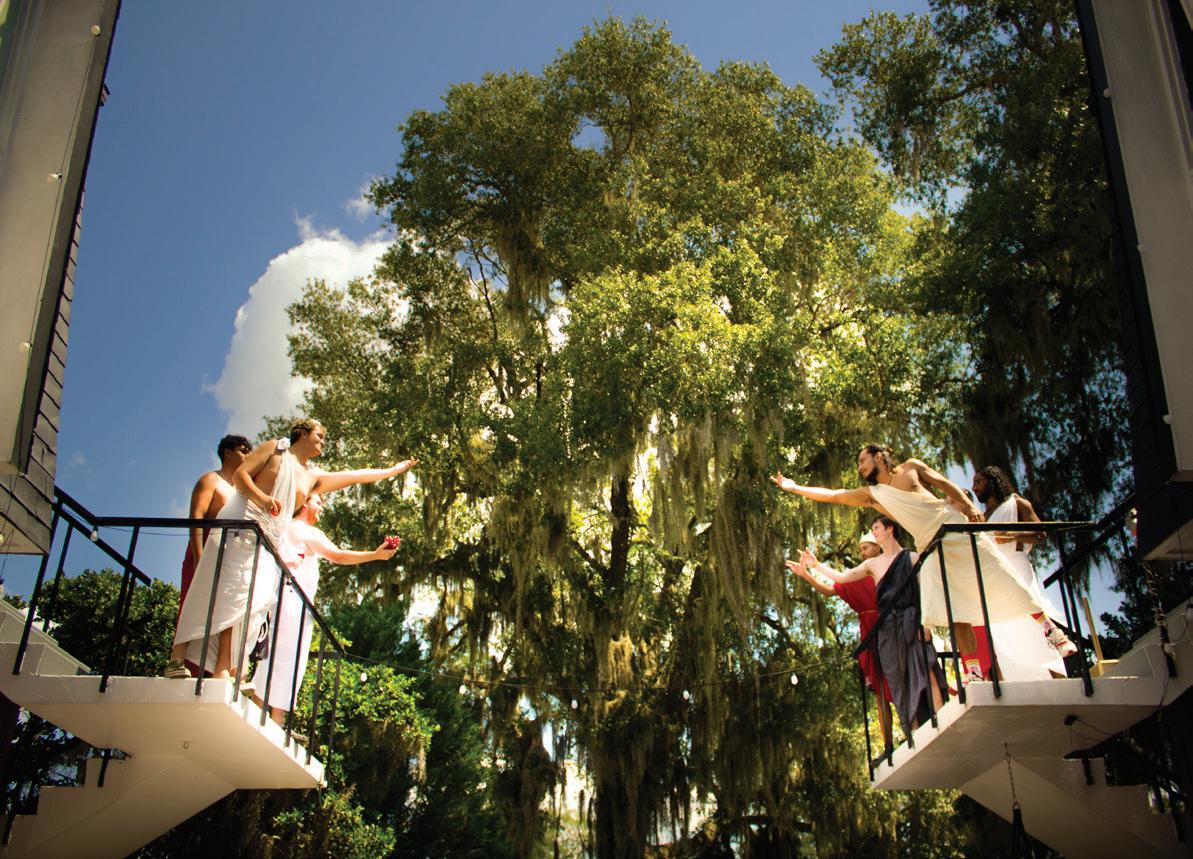

“The Creation of Adam,” Vatican City, 1512. (We’re not sure how this got here.)


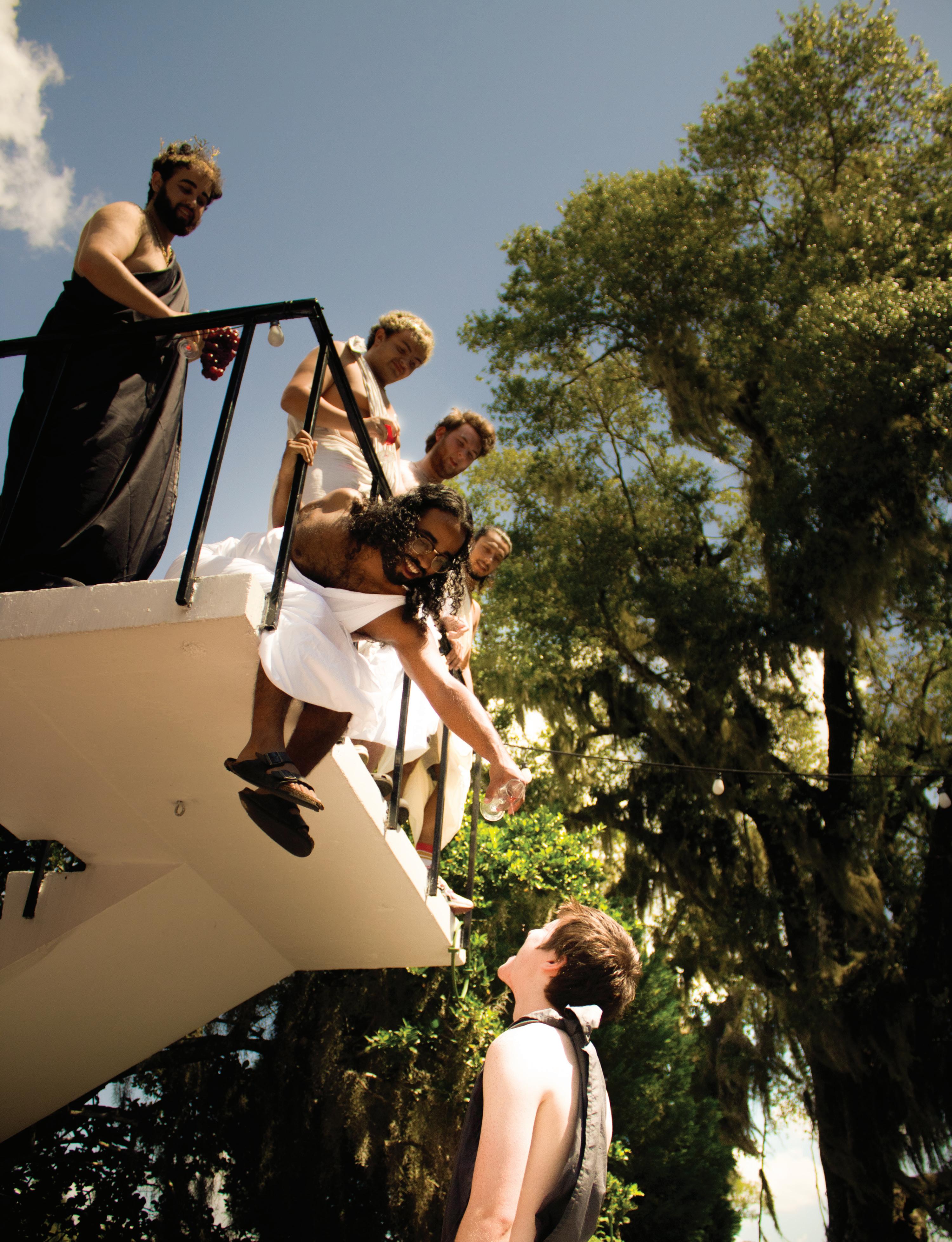


It seems as though our subjects are off track again. “Gladiator Games,” Rome, Italy, circa AD 80.


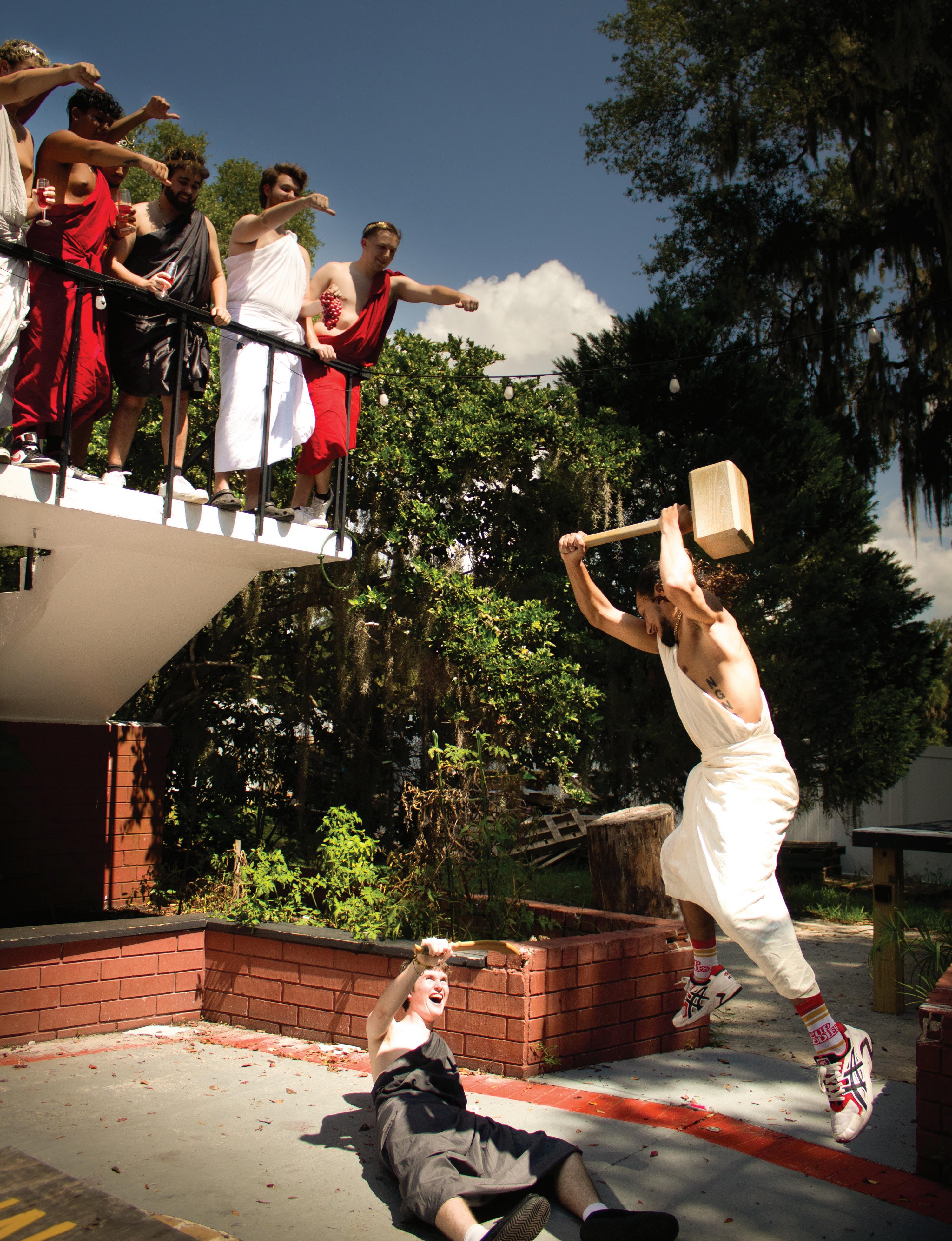




thank you thank you


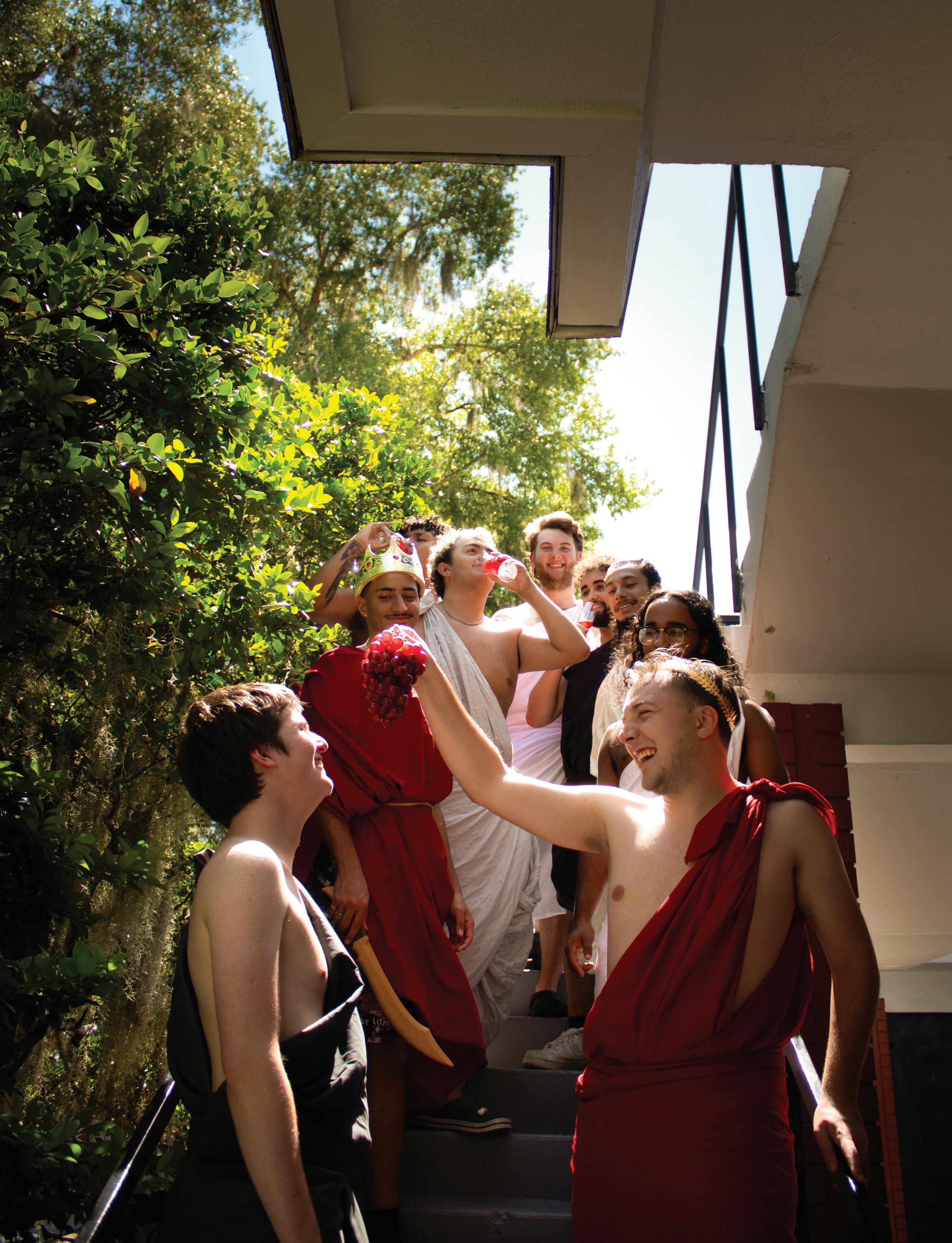
Photographer, Indya Mckoy '26
Model, Fidel Vazquez, ’29, Model, Elliott Tyson Guess, ’28,
Model, Daniel Kilgore, ’28,
Model, Herb Adames, ’27,
Model, Ian Hunt, ’26, Model, Ramon Patton, ’26,
Model, Julian Rocha, ’26, Model, Carter Kwritzky, ’26, Model, Adrian Cerrud, ’26. the reporter 30



to the Delta Mu chapter of Sigma Nu, whom joined the DeLand community in 1913, for contributing your brotherhood and temple for this project.















Just as the cup-bearer Hebe proffered divine nectar to immortalize the Olympian gods, beauty and skincare companies of the modern age are seducing us with the same siren song of youth. If you walk into any given Ulta or Sephora nowadays, you’ll find yourself bumping elbows with a ten-year-old carrying armfuls of fuchsiacapped Drunk Elephant bottles. She will most likely have a mother trailing behind her, debit card ready to be wiped clean. In our current hyperfeminine era of midnight makeup vlogs, pastel plumping lip-glosses and extensive skin care routines that grow scarily closer to car payment prices, young girls and women are contributing to American overconsumption more than ever. It was once thought that the ‘fountain
of youth’ lay within Botox and infomercial creams sponsored by celebrities, but now these elixirs line the shelves of massive, easily accessible franchises. What has stirred our generation into believing we need so many high-dollar products as our modern ambrosia? Is it Hollywood’s influence? Radiant, supple-skinned models on Vogue covers? Or is the culprit more so online trends and marketing ads meant to illude our perceptions of beauty altogether?
To find a verdict on this, I spoke to numerous young women within Greek life here on campus, seeking out their skincare and makeup routines as well as their consensus on what prompts women to have such lengthy must-have product lists.
For Aryanna Gordillo ’27, a sister of Alpha










Xi Delta here at Stetson, the art of makeup is a daily ritual that includes products from INKEY List, Charlotte Tillbury and Shiseido. “I do my makeup every day, because I love doing it. I find comfort in it,” said Gordillo. Although she takes inspiration from TikTok influencers such as Yolanda Diaz, Gordillo considers her older sister to be her true muse. “Growing up watching my sister do her makeup all the time made me want to do it, too. Every now and then, she’ll mention, ‘Did you see Ariana Grande is releasing new r.e.m.? Or, Rihanna’s releasing more Fenty Beauty?’And I’ll be on that,” Gordillo said.
core. With skincare, it’s not as fun. What is the impulse to buy moisturizer? I will impulse buy a lipstick, though, or an eyeshadow,” said Medley. “When I think of my Colourpop collection, that's all just for fun. I love glitter. But when it comes to the concealing part of it…to mask my undereye bags or when I’m breaking out…all of that feels more like pressure from social media and society at large. The capital ‘B’, capital ‘S’ beauty standard,” Medley said.












Celebrity-owned makeup lines indeed induce an ultra-contemporary incentive to purchase cloud-shaped perfume bottles and purple-dusted highlighters with the promise of looking like Rihanna. Because, let’s face it: Who wouldn’t want to in a society that exalts A-listers so frequently? This scheme targets women not only in makeup aisles but across other markets as well; Oreo has recently succumbed to plastering Selena Gomez’s name on their packaging, in light of this ongoing popstar worship. All of it is a capitalist strategy; a corporate marketing scheme zeroed in on young women – and yet we continue to play along.




“All the pretty colors are marketing. They are just trying to reel you in to get your money,” said Phoenix Medley ’26, a member of Zeta Tau Alpha. Rarely seen without her bedazzling Colourpop eye glitter, Medley flaunts her shimmery shades of pink and green set against a strawberrythemed eyeshadow palette.




Yet for skincare, Medley swears by a simple Good Molecules-followed-bysunscreen routine. “For makeup, I find that I am overconsumption-












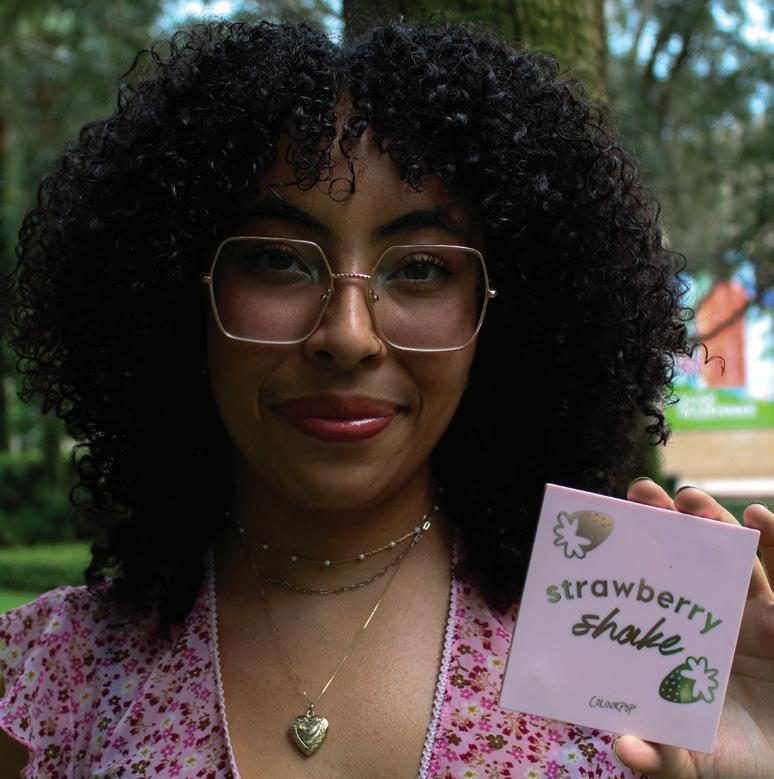



Phoenix Medley '26


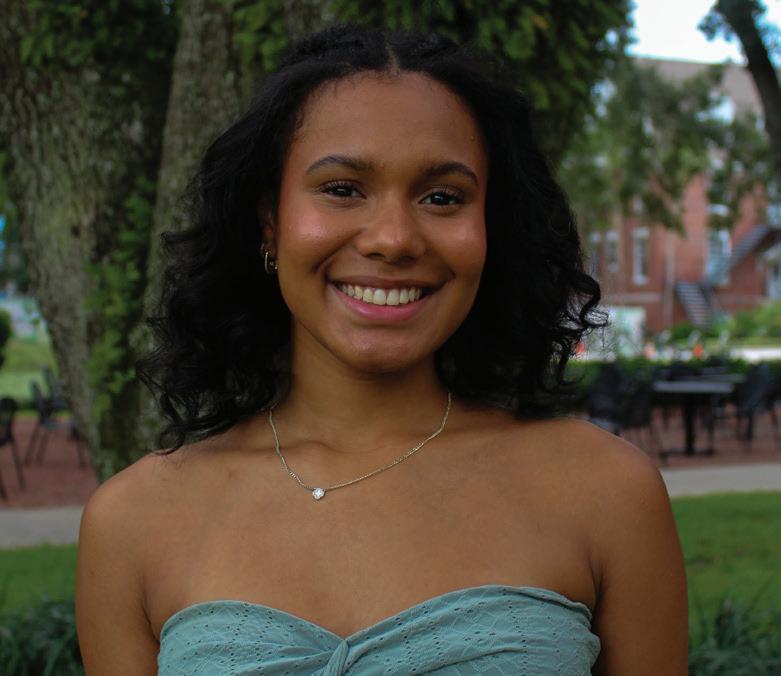



The capital ‘B’, capital ‘S’ beauty standard " "


















This in itself seems to be the societal motto: You require a product to be perceived as prettier. “Once [you] start doing that every day, then you don't even like what you look like without makeup on,” Medley said. Gordillo offered similar words to comment on this self-destructive hyperfixation. "Growing up, I felt very insecure about certain facial features that I was told weren’t the standard of beauty…now I’m wishing I had never even touched a razor or a tweezer,” Gordillo said. “Now I know that I like the way I look, so I put on the makeup to enhance the features I already have,”









don't need a hyaluronic acid. You don't need to buy stuff from Good Molecules, Bubble or Drunk Elephant.”
"

There was a whole Sephora epidemic with…children going in and trying all the serums. "
Aryanna Gordillo ’27









From this perspective of makeup as an enhancement – not a replacement – Medley agreed. “Without the concealer…your face is beautiful regardless. You don't look like a zombie, you look normal,” Medley said. Yet, Kameron Matanis ‘28, a sister of Pi Beta Phi, has found herself receiving noticeably more chivalrous gestures from strangers while donning a full face of makeup. “People do treat you differently when you look better. When my makeup is done [and] hair is done, people open doors; they see you,” Matanis said. “With American standards, beauty is a preference…There is always something new that you have to buy. There is the pressure of everyone talking about it, everyone else is buying it, [so] why shouldn't I? They make everything so convenient now, but it comes at a price. And it is normalized,” Matanis said. Normalization, the casual disease within the beauty realm to ‘try all, buy all’ has even begun to plague pre-pubescent generations below our own. “There was a whole Sephora epidemic with…children going in and trying all the serums. Girls in elementary school that want to wear makeup,” Gordillo said. “Biologically, you have the tools you need to have great skin at a young age. You












Medley wholeheartedly agreed once again, comparing Gen Z’s childhood and its relationship with makeup to the tainted one that followed it for Gen Alpha: “That transitional period that we had is now completely gone,” Medley said. All of this makeup mania? The mutant child of overconsumption and America’s love of it. Do not be fooled by the TikTokers romanticizing their endless collections of perfume bottles, titling it ‘overconsumptioncore,’ in block letters. There is certainly nothing romantic about it.














“There are a lot of ecostrategies that other countries do that we just don’t take the effort or time to do ourselves,” Gordillo said. Perhaps if the U.S. allotted some of the profit it was making from beauty lines towards greener policies, we would be able to consider justifying the mass consumption.
Medley acknowledges that we are far from this ideal. “We are the overconsumption capital,” said Medley.
“In reality, beauty is constructed for the purpose of gaining a profit. That is the only reason we feel inclined to buy all these things. Because somebody told us, ‘you’re worth less if you don't have this,’”
It is for that reason that beauty bears a hefty price tag in today’s culture. Many of you who read this may be impulse shoppers yourselves – I ask that the next time you pick up that eyelash curler, serum or bright tube of lipstick, you have a long, hard think before buying. Not only are you adding to the mountains of money that pad the accounts of corporate fatcats, but in just a few months time, you’ll be adding to a mountain of makeup in the landfill.
















Written by Michaela Hawthorne

































I always felt intimidated as a woman to train for self defense. I had accepted a life where I would walk down dark streets on trepid alert, mace and a safety alarm equipped in my bag. I always wanted to learn to fight but I grew up in an early 2000s world where the representation of strong female fighters was mostly fictional and overly sexualized. The girls I knew who trained in self-defense sports, like wrestling or karate, were such a rarity that I worshipped them as akin to the goddess Athena. Now, there are obviously many reasons I knew more boys than girls growing up who practiced fighting and none of that had to do with the girls’ abilities. It’s 2025 and I am here to throw the binary myth that women cannot fight out the window!

When classes began in August, I was greeted in the Hollis Center’s fitness studio by Karah Evan ‘27, a double black belt with over 10 years of self-defense experience. She is trained in both the Kenpo and Isshin-ryū disciplines. Kenpo is a Chinese ‘fist method’ known for its speed and fluidity, while Isshin-ryū, originating in Okinawa, Japan, is typically perceived as more direct and forceful.
In my later interview with Evan in the CUB cafe I learned that it is her first semester at Stetson. She volunteered to teach a self-defense class after she learned of the Wellness and Rec. staff’s intentions to begin classes in that vein.
Evan described the class as a beginner-friendly class for all genders, but the teachings are catered








specifically to women, who are more likely to find themselves in a situation in which an attacker is larger than they are. “You have to anticipate it happening. You never want to go through life like, ‘Oh, I'm invincible, whatever.’ You always want to be prepared that something could happen. Hope for the best, you know, prepare for the worst,” Evan said.


"You always want to be prepared that something could happen. Hope for the best, you know, prepare for the worst,”
-Karah Evan ‘27
The purse-clutching college commuter in me really resonated with that idea. During the first class session, I felt hopeful as I learned how to properly perform punches and kicks, focusing on technicalities like guarding myself and balancing my weight. Alongside me were students like Jennifer Bentley, an exchange student from Germany working on her master’s degree.
“So everybody told me that America’s very dangerous, and there are so many crazy people around. That’s why I thought ‘I wanna be safe here’. That’s why I’m attending this course,” Bentley said in our later interview. Also joining me on this journey was Alex Barnett ‘26. Though a fellow newcomer to self-defense, “The movements aren’t as hard as I thought they’d be. They’re

"

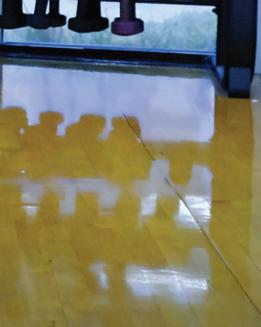


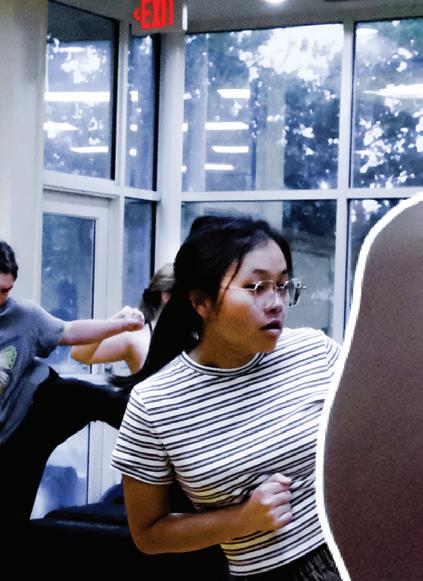
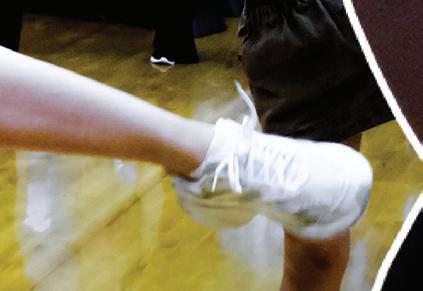




a little complicated but I’m sure they feel strong. So, I think that they’ll be very helpful,” Barnett said. “Being able to do it with a group of people I really like is empowering because it feels like I’m not being judged at all.”





I would have to agree on Barnett’s sentiment of empowerment. Performing my first delayed sword combination, I felt a jolt through my body. Not to be dramatic but Evan was my Athena and I was one of the ten soldiers in that studio training for the Trojan War.






Through my conversation with Evan, I learned that self-defense is powerful not just as a killer combination, but as a mentality. They define self defense as “not being a victim, honestly. I think that is the best way to put that. I mean, if you are able to make it out and you might be injured, that's fine. You can heal from that. But if you make it out


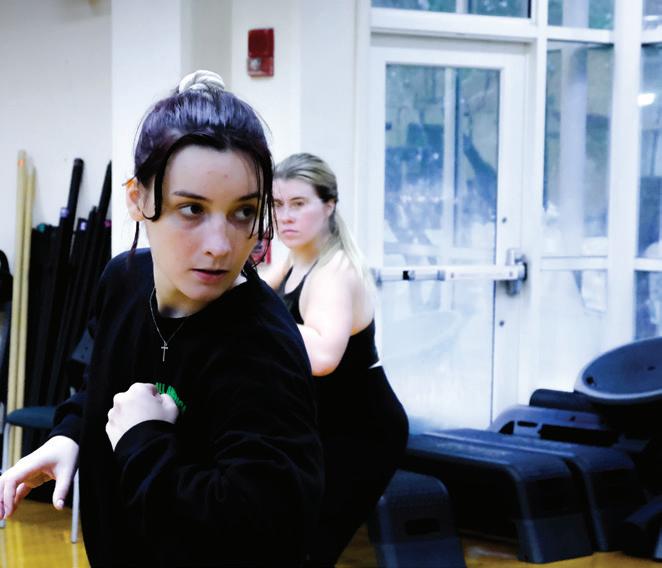



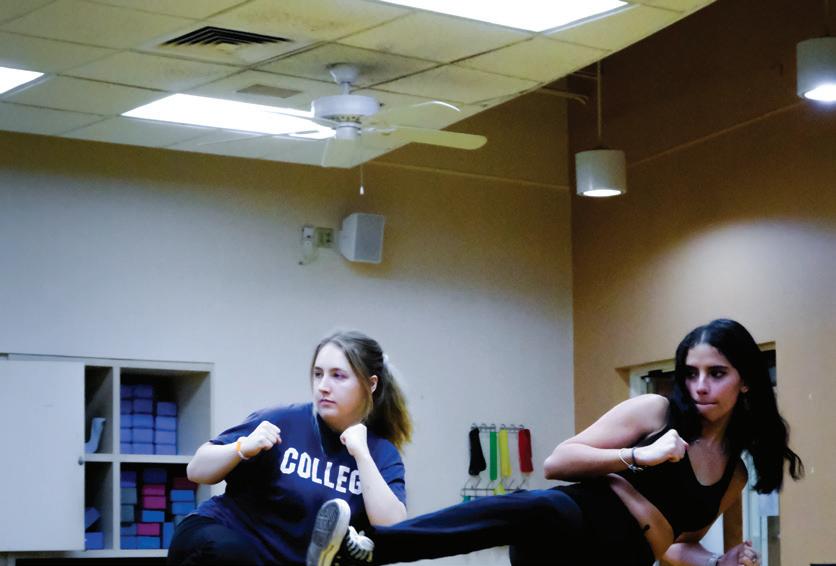
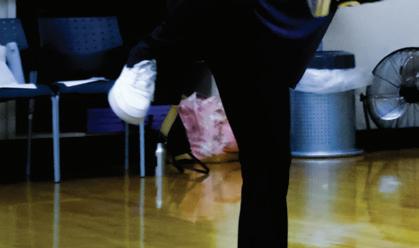
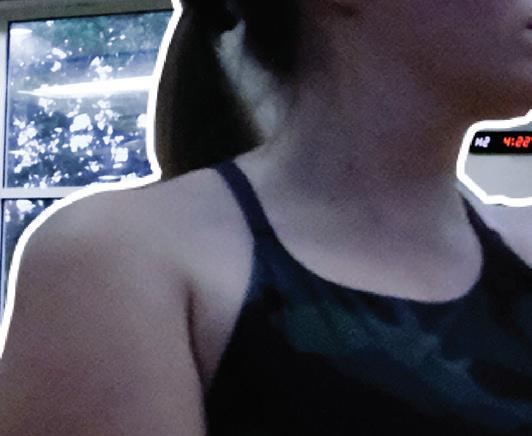
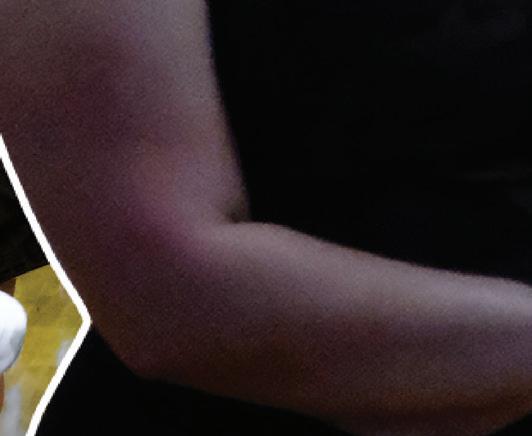


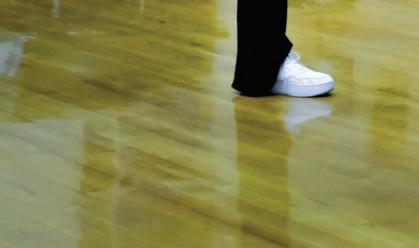






Being able to do it with a group of people I really like is empowering because it feels like I’m not being judged at all


"
-Alex Barnett ‘26


































with your life, I think that's pretty effective,” said Evan. Though this class is motivated by a serious subject matter, Bentley noted a simple joy that arises during class time. “It’s great. I think it’s fun. I met amazing people…what else can I say?” Bentley said. For anyone nervous to join, Evan advises a mentality shift. “Honestly, just alter-ego it. Just pretend you're someone else, in a way. This one personality that I have is going to be confident, it's going to not fear anything. Like you got this and it's an hour, you know, it's an hour out of your life. In the grand scheme of things, if you mess up, who cares?” Evan said. And mess up I did . Especially when learning the attacking mace combination – it was easy to fumble a punch or forget to block my ribs. But in the long run, I know I will remember my commanding skills over my occasional fumbles. Maybe one day I will even look in the mirror and see myself as one of those goddesses I always dreamed of being.



apply noW on EngagE






thE World MovES too quicklyWritE What'S rEal, What MattErS, What'S nExt
reporter
Jay-Z, Kanye, Beyonce- Lift Off
Go D.J.- Kaytandra
Bills, Bills, Bills - Destiny’s Child
Powerful- Jussie Smollet, Alicia Keys
Dirty Cash (Money Talks) - The Adventures of Stevie V
C.R.E.A.M. - Wu Tang Clan
Si No Llego a Volver - Cande Tourné
MARIPOSAS - Cande Tourné
Mo Money, Mo Problems - The Notorious B.I.G.
I Heard It Through the Grapevine - Marvin
Gaye
Lo Mejor para los Dos - Cande Tourné
Me Gustaría - Cande Tourné
Diamonds are a Girl's Best Friend - Marilyn
Monroe
Little Old Me - Colin James and Natalie Reese
Out in the Garden - Annika Kilkenny
Money Money - Joel Gray, Liza Minelli
Rest of My Life - Daisy the Great
Big Spender - Peggy Lee
Metamorphosis - Infinity Song
Bring Life- Kalado
Rich as F*** - Lil Wayne
This is America- Childish Gambino
Get MuNNY - Erykah Badu
Hot Body- Arya Starr
Pretty Hurts- Beyonce
America Has A Problem- Beyonce ft. Kendrick
Lamar
Have A Baby (With Me)- Daniel Caesar
27 songs, 1 hr 30 min


